After five days of road tripping through Europe to Innsbruck in Austria, we’re on the final leg back home with one more stop on the agenda. In accordance with our GPS route guidance, we roll through the industrial suburbs of Magstadt in Germany to find a rather unassuming 4-story building branded with a small Merida logo on the outside.
Believe it or not, this modest building is the R&D facility for Taiwanese manufacturing giant Merida. We’re here to meet the team, and we’ve got the afternoon pencilled in for a tour of the R&D facilities, followed by an exclusive first test ride of the brand new 2018 One-Forty trail bike.
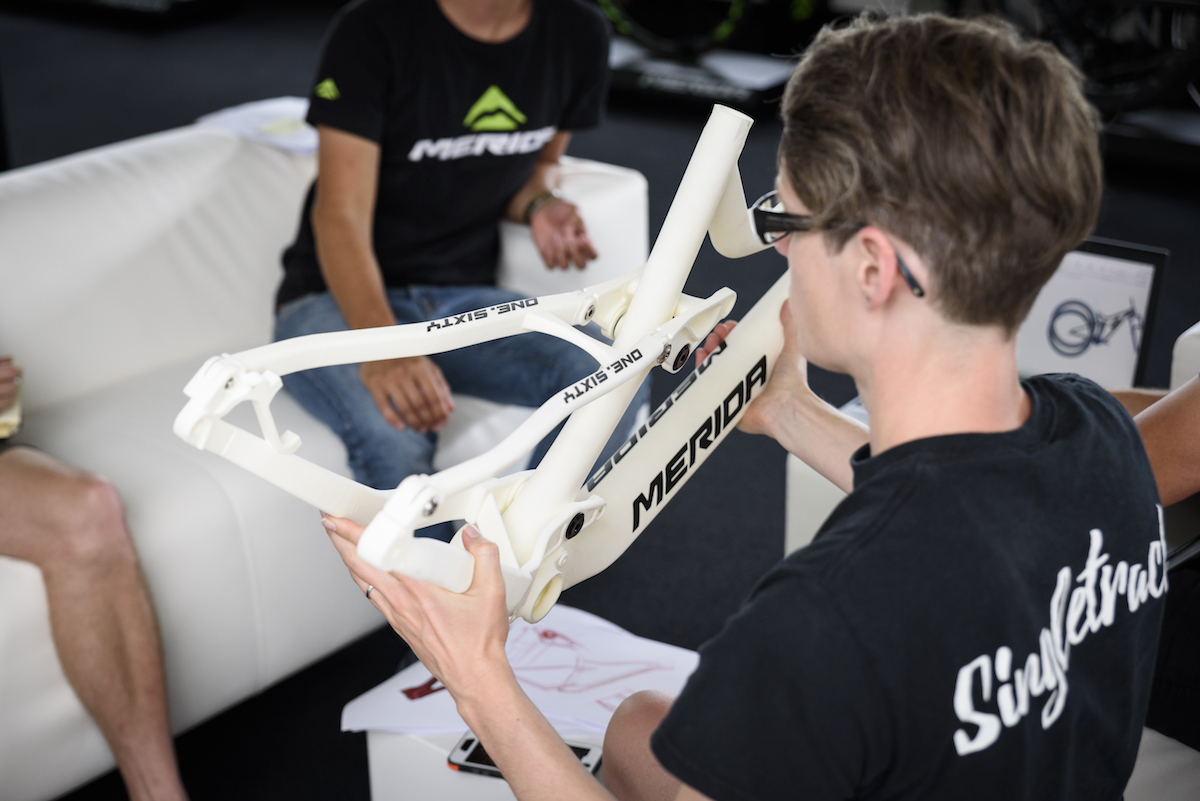
Merida The Manufacturer
When you think of the Merida brand, chances are that you’re envisioning gargantuan Taiwanese factories. Factories filled with welders fabricating frames and mechanics lacing wheels, while an endless number of workers install components on mile-long assembly lines, churning out hundreds of thousands of bicycles. You might also think of entry-level hardtails, high-end road bikes, or urban e-bikes. You might even think of Specialized – a brand that Merida manufacturers for – or a host of other big (and small) name brands that Merida also makes bikes for.
If any of those thoughts popped into your head, then you would be right.
Latest Singletrack Merch
Buying and wearing our sustainable merch is another great way to support Singletrack
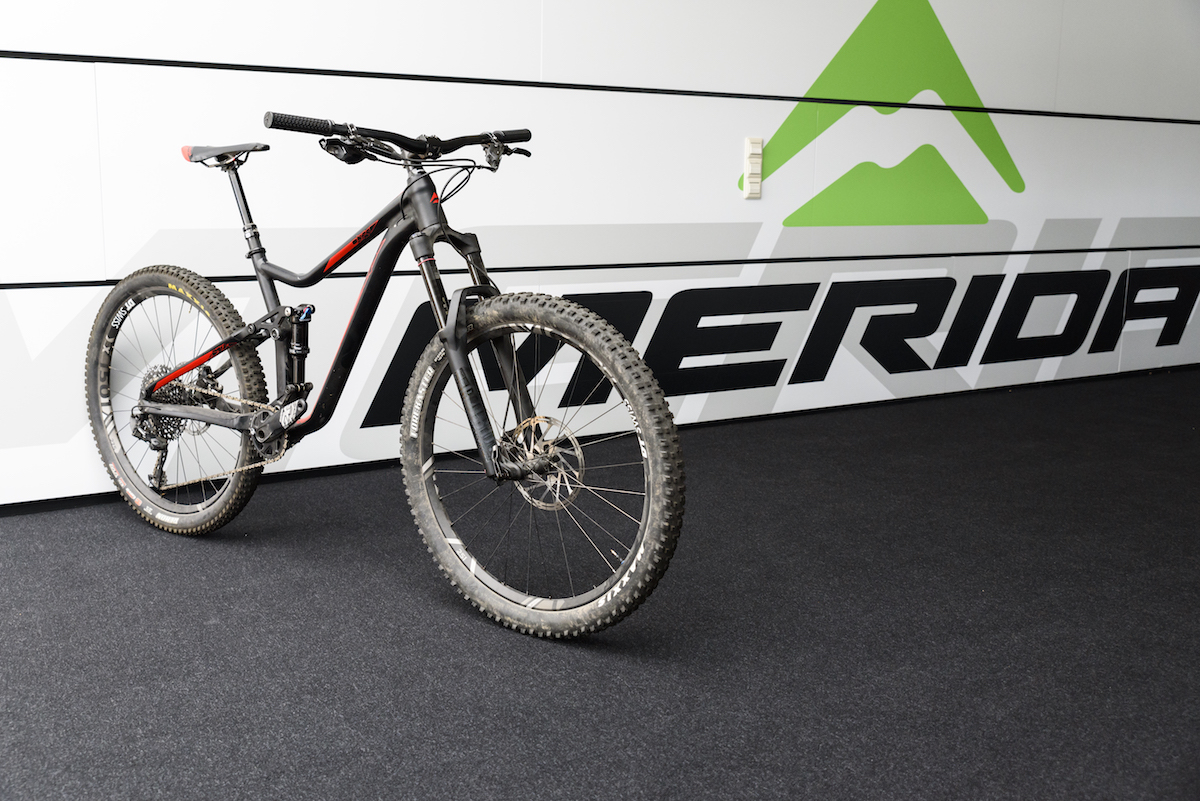
Existing since 1972, Merida has always been known as a bike manufacturer. Alongside Giant, Merida is one of the largest makers of bicycles in the world, producing approximately 4 million units per year across its Taiwanese and Chinese factories. Kids’ bikes, carbon fibre time trial bikes, hardtails, e-bikes, full suspension race bikes – they make them all. Taiwan is of course home to much of the bicycle manufacturing industry, and Merida is one of the biggest companies there. As of 2012, the company was valued at £350 million on the Taiwanese stock exchange. In short, it’s big.
Although Merida’s primary business has been in bicycle manufacturing, the company has always had its own bike brand too. Starting out with humble beginnings and a focus on the lower end of the market, the brand has been steadily increasing its global presence, and is now available in over 70 countries worldwide. Most mountain bikers who have walked into a bike shop over the last decade would be pretty familiar with the Merida brand one way or another.
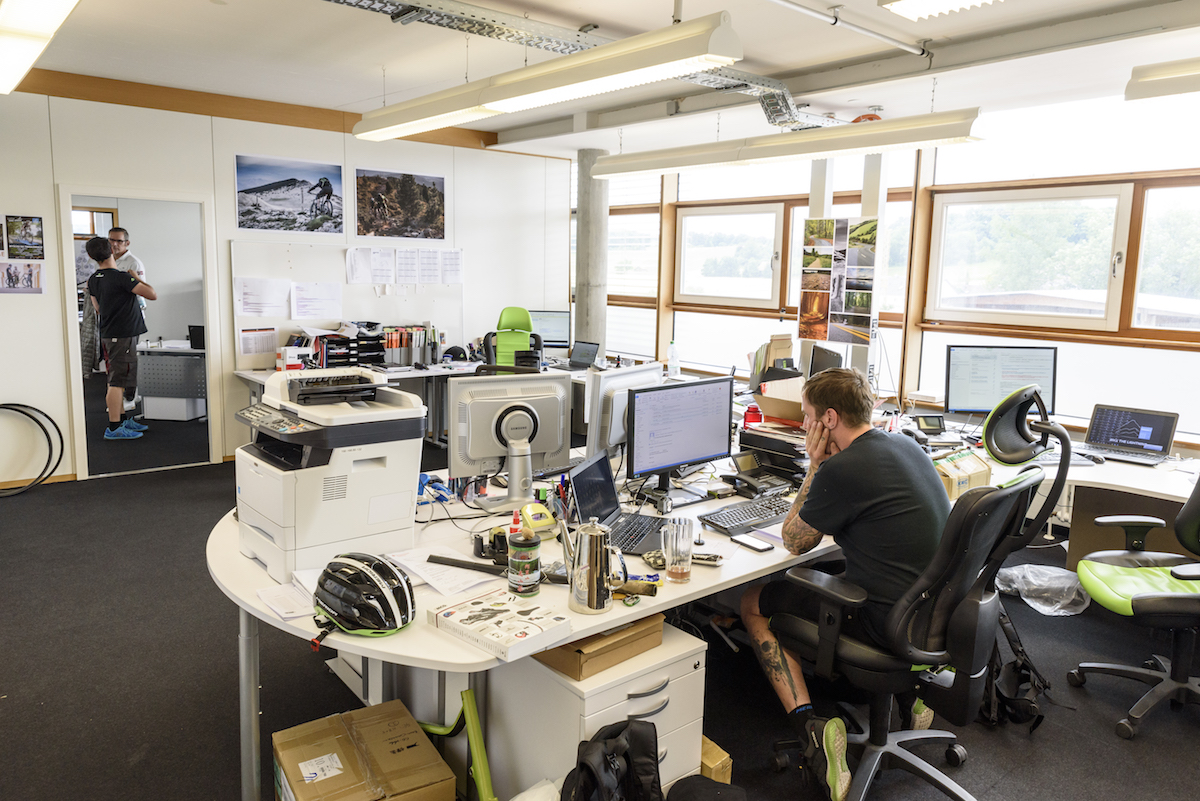
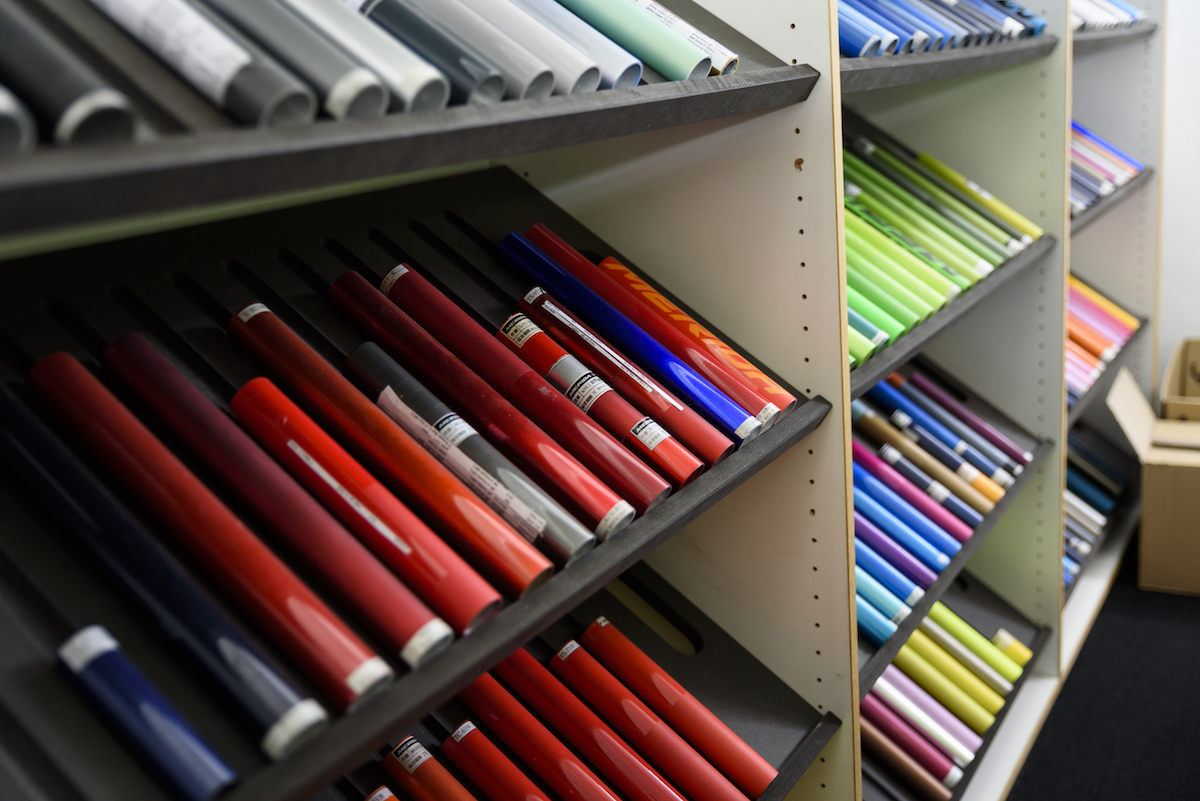
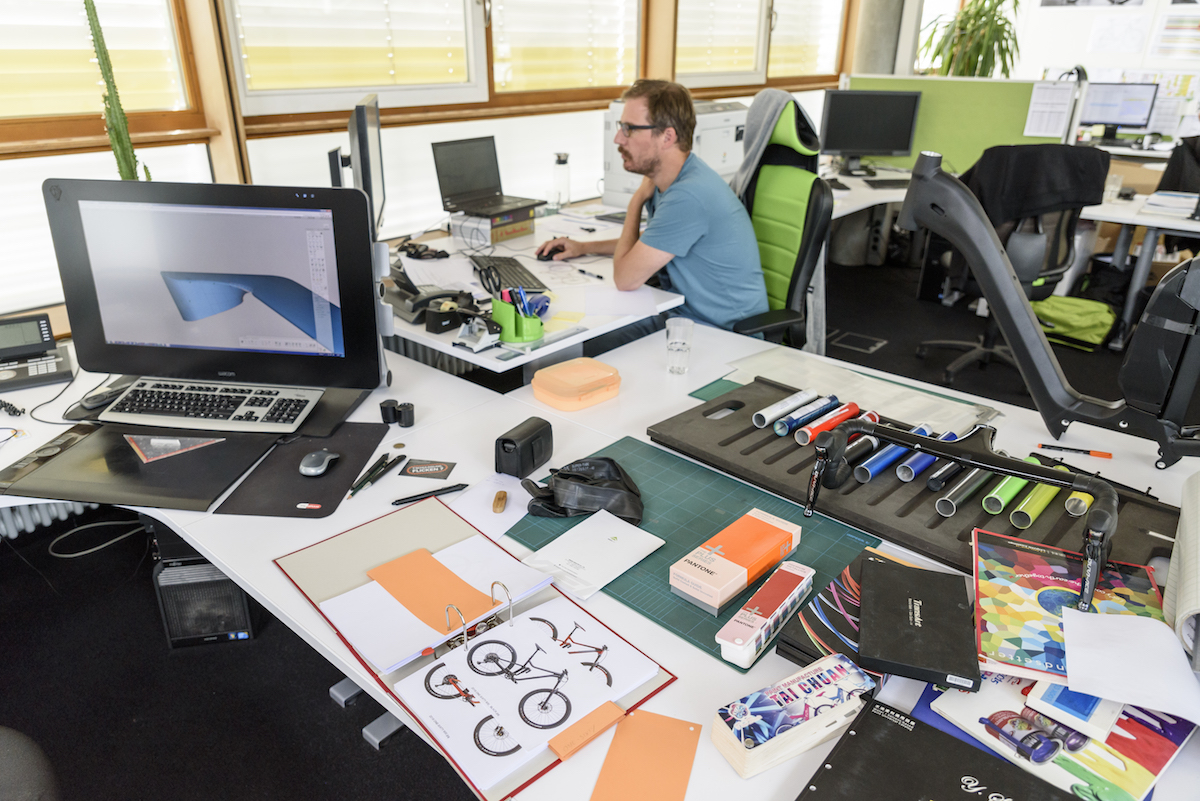
But what you probably don’t think about when you hear the Merida name is the brand’s Stuttgart-based R&D centre. Located in the town of Magstadt, about half an hour’s drive from the centre of Stuttgart, this is the place that takes care of all the design, engineering and in-house testing of each and every new Merida model. From the cutting-edge Reacto aero road bike, through to the latest One-Forty full suspension trail bike, every frame idea, every graphic and every suspension design is born right here.
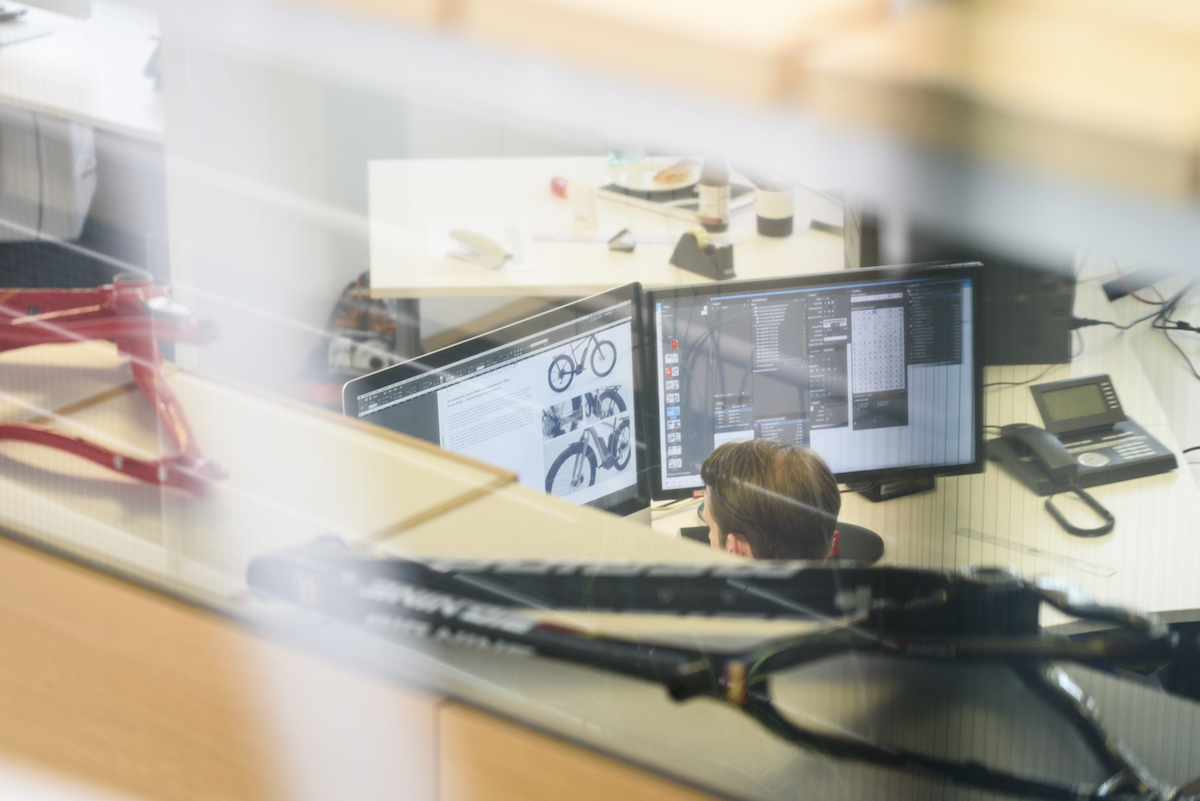
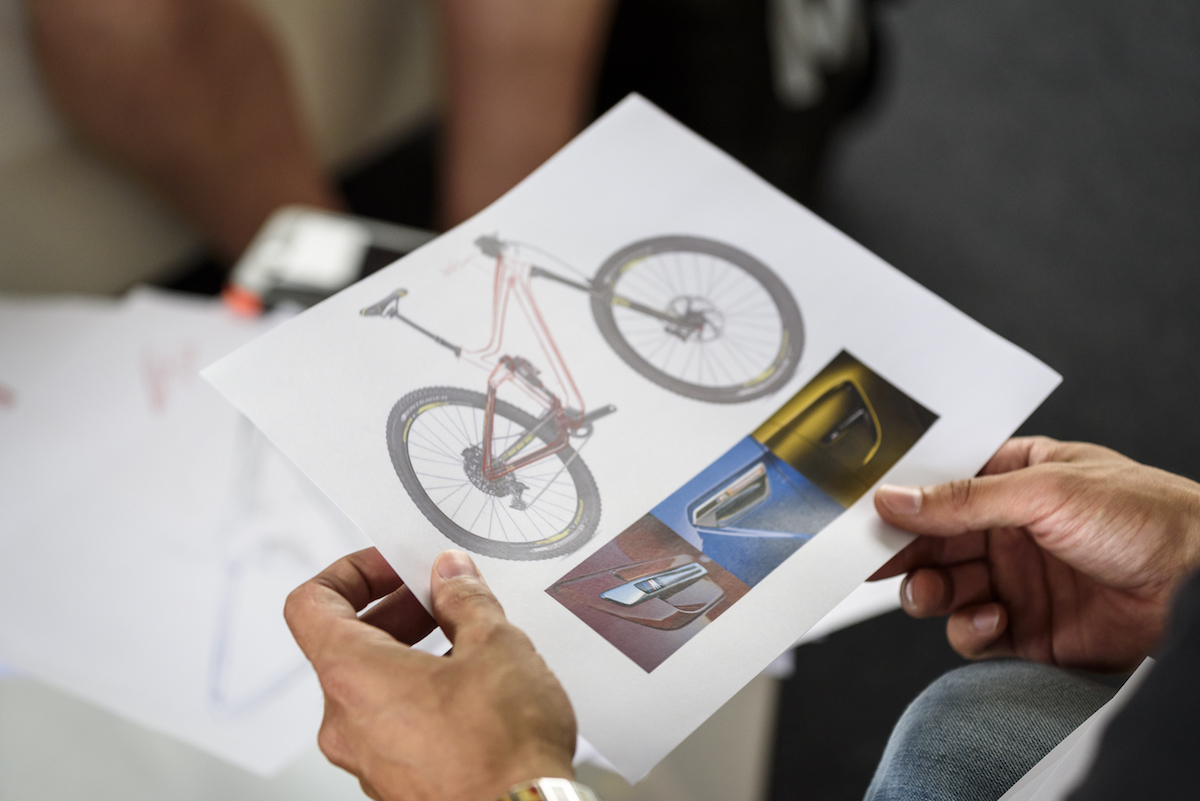
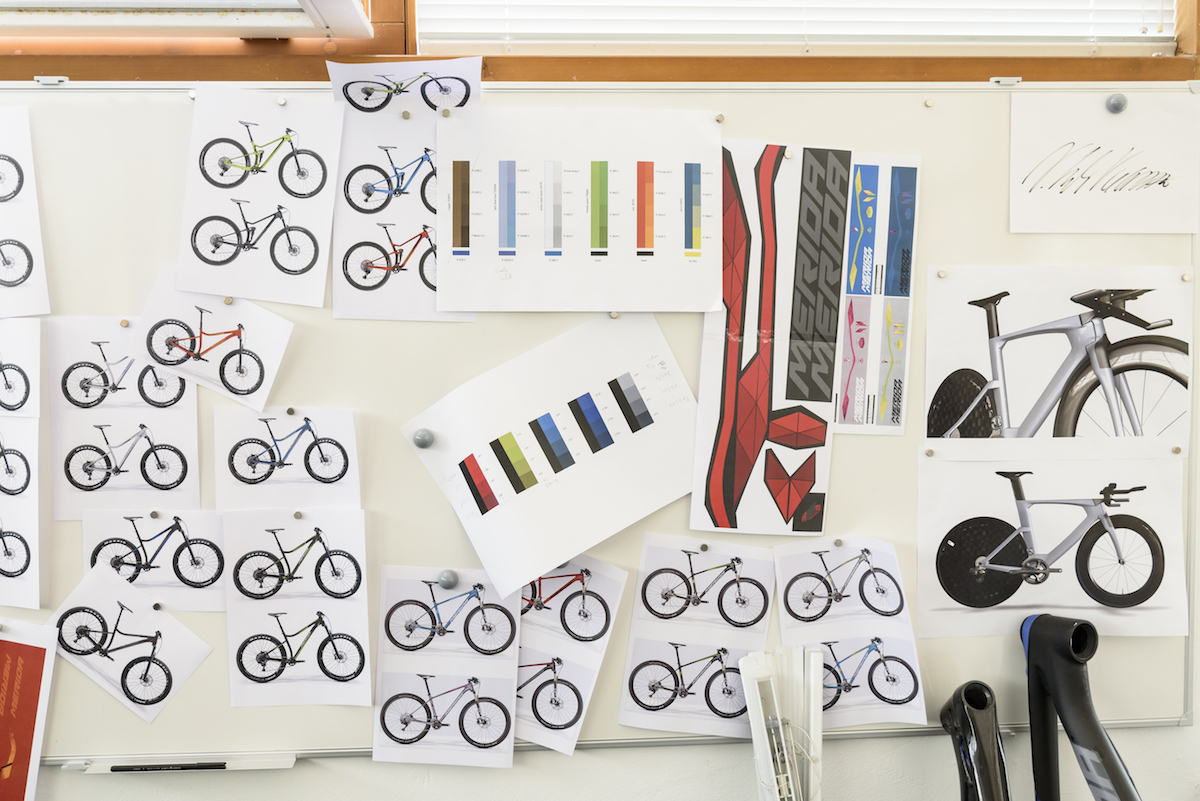
Merida’s combination of German design with Taiwanese manufacturing may come as a surprise to some, but it’s been this way for 16 years. As far back as 2001, Merida has drawn on its German distribution partner (Merida & Centurion Germany GmbH) to lead the design and engineering of its range. For much of that time, just one man by the name of Jürgen Falke was responsible for envisaging the full lineup.
A Fast Follower To Market Leader
As Merida’s brand presence has increased with Falke at the helm, the company has been pushing up into the higher-end of the market. You probably will have noticed the increase in carbon full suspension bikes, superlight hardtails and cutting-edge road racing bikes, and that’s been made possible via a deliberate push from the people within the brand. The company is still of course a large manufacturer for many other big brands on the market, but the Merida brand is no longer considered a side business.
To make this a possibility, Merida officially launched the Merida R&D centre in 2014 as a sub-company of Merida & Centurion Germany. Set up as a dedicated facility to lead the design and engineering of the Merida range, the R&D centre is intimately linked with (and funded by) Merida Taiwan.
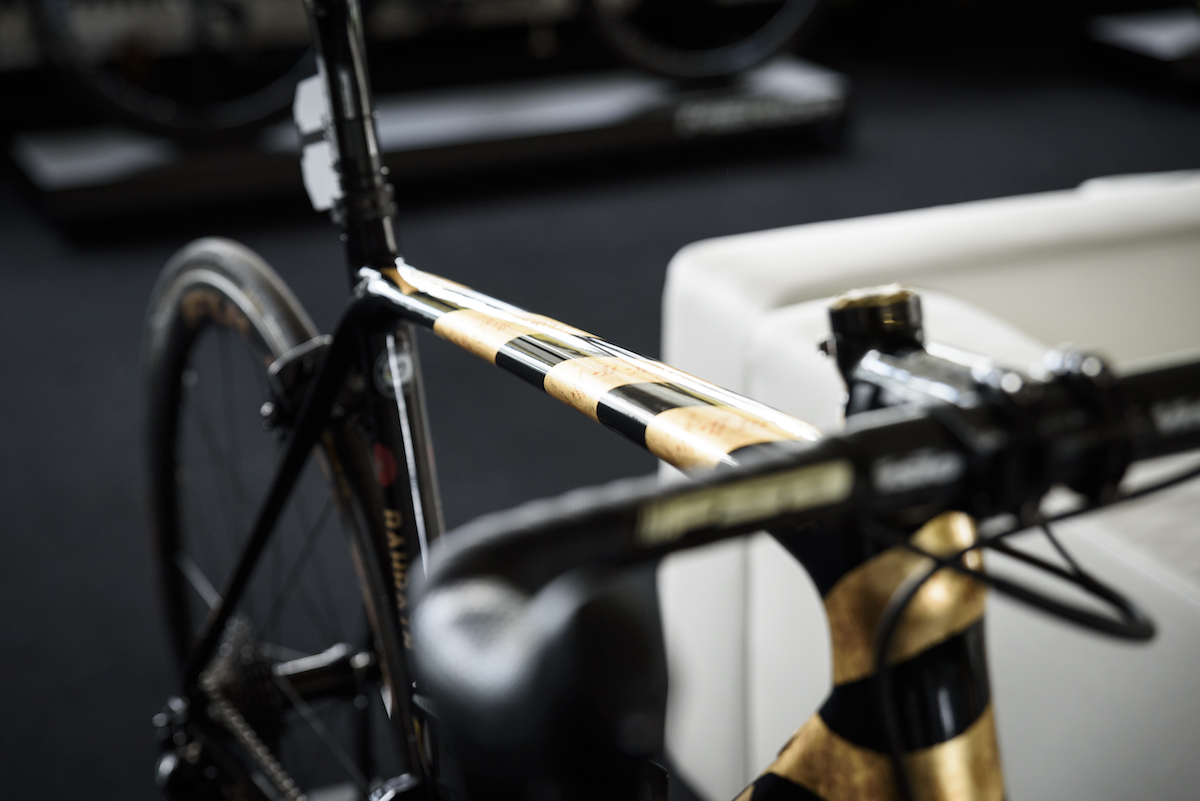
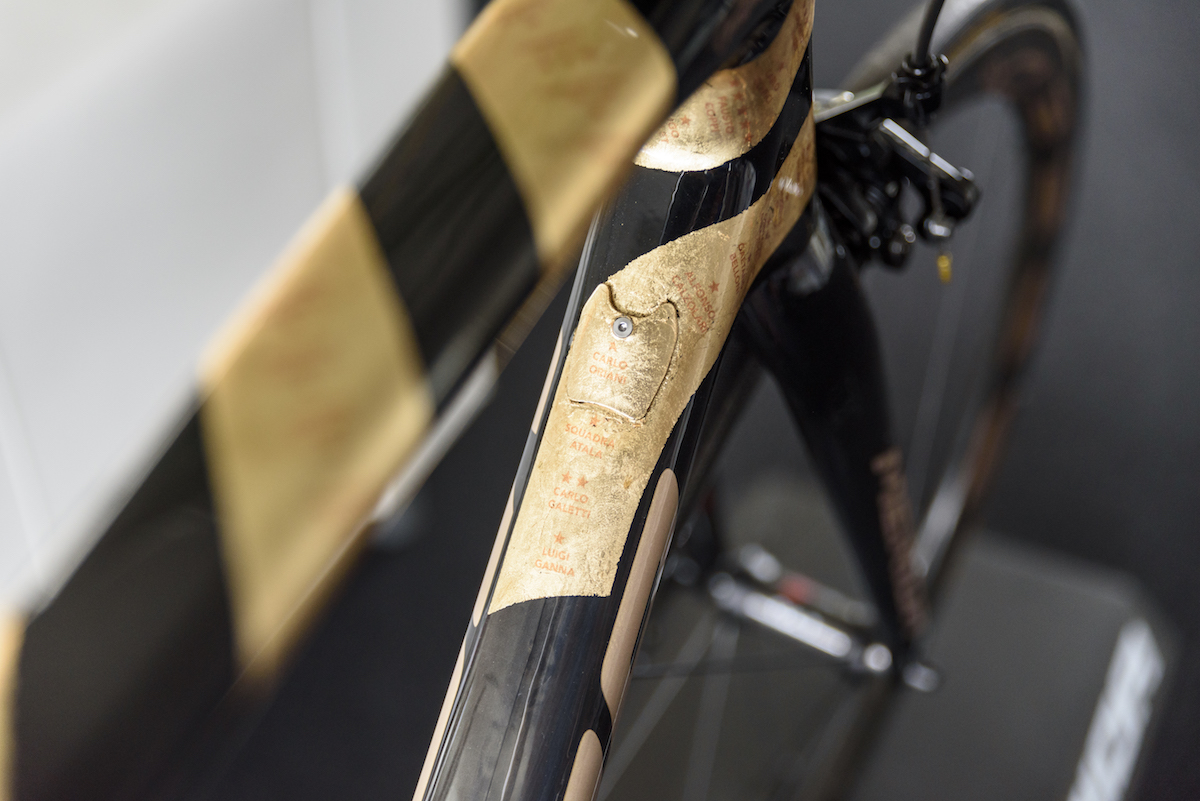
For such an enormous bike company, the Merida R&D team itself isn’t actually that big. There are just 14 people within the new office, including Falke who is now the CEO of Merida R&D. Taking us through our tour of the facility is Merida’s head of Product Management, Reynaldo (Rey) Illagan, and Senior Frame Engineer, Roman Braig.
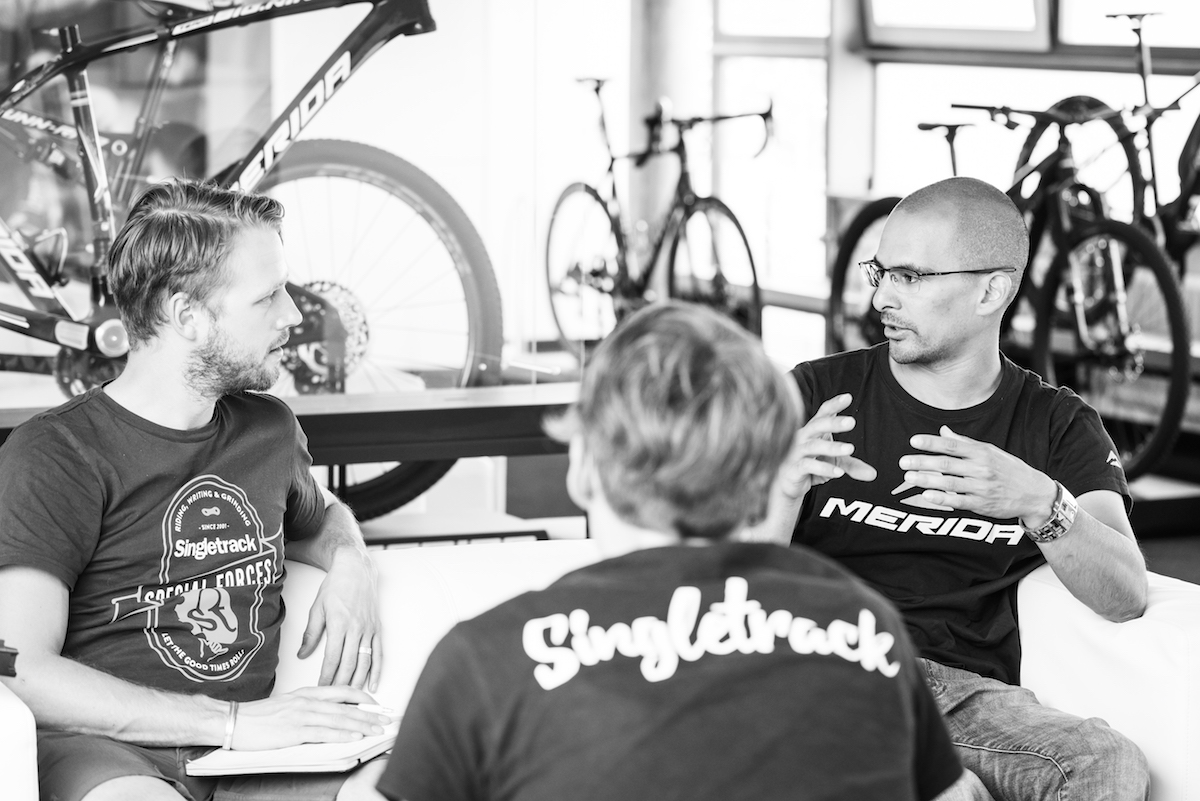
Rey explains to us that the R&D team is well aware of Merida’s existing reputation for being a brand not known on the bleeding edge of technology. “We say that at Merida we used to be a fast follower, that maybe we weren’t leading the market, but that we were fast to accept new trends and designs and produce good quality bikes. But now Merida wants to be a leader”.
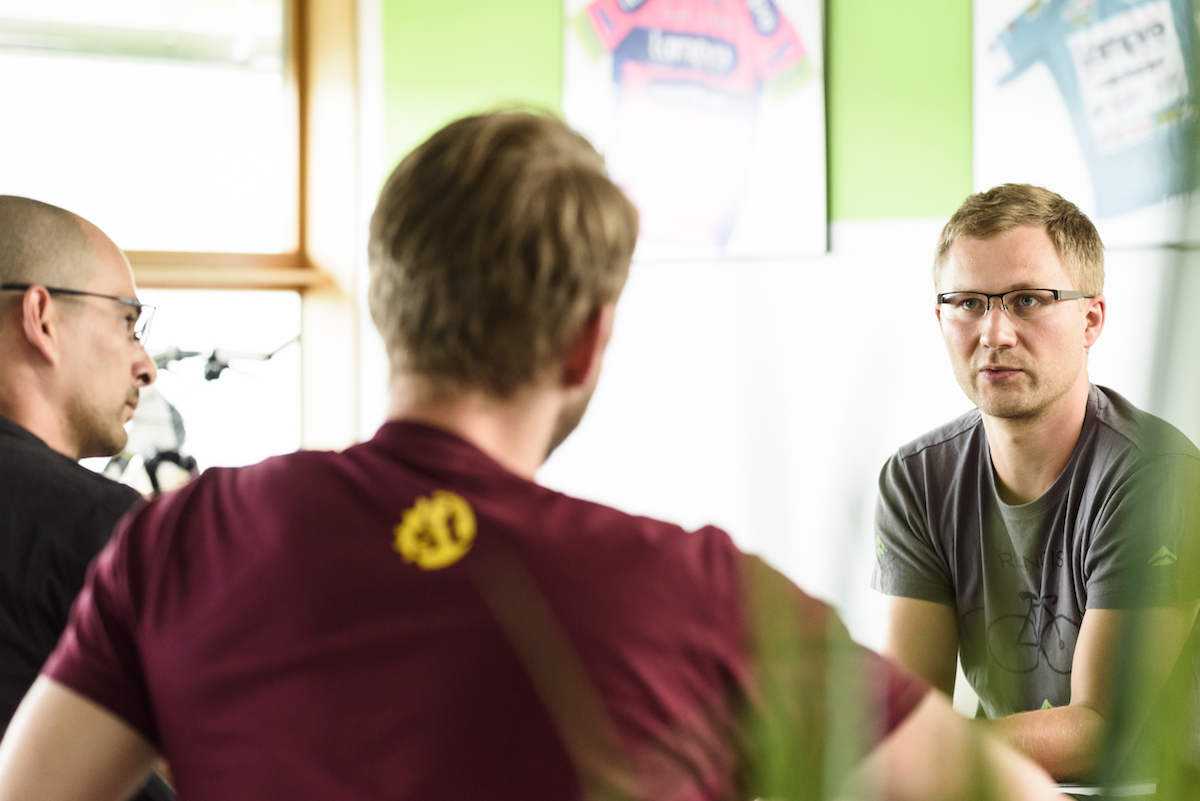
For proof of Merida’s conscious change in course, one only has to look to several new product developments in recent years. Take the current Big Nine for example, with its impressive sub-900g frame weight. Or Merida’s latest One-Sixty; an enduro bike that has been earning itself rave reviews since day one. Both were bikes that were conceived within the walls of the new R&D centre.
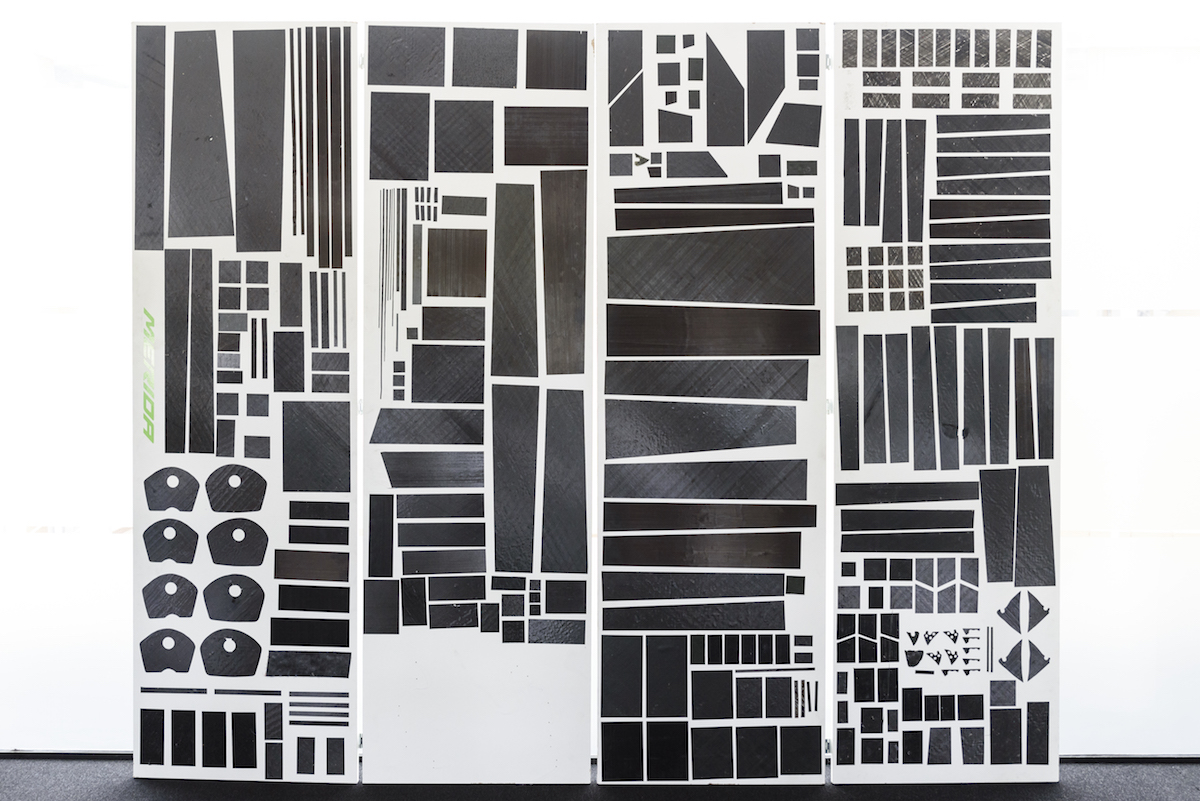
After a few slabs of pizza for lunch with the global marketing team, Rey takes us downstairs from the conference room to show us through the R&D office. Here we’re shown early sketches, rendered CAD files, and 3D printed models of full suspension mountain bikes. There’s also a test lab, where frames are checked for all kinds of things like head tube stiffness, bottom bracket stiffness, and frame alignment. One jig in particular uses a dual-axis track with a laser pointer to identify pivot locations and frame geometry. These jigs are mostly used with pre-production frames, in order for the R&D team to clarify if everything is as it should be before hitting the green light on mass production.
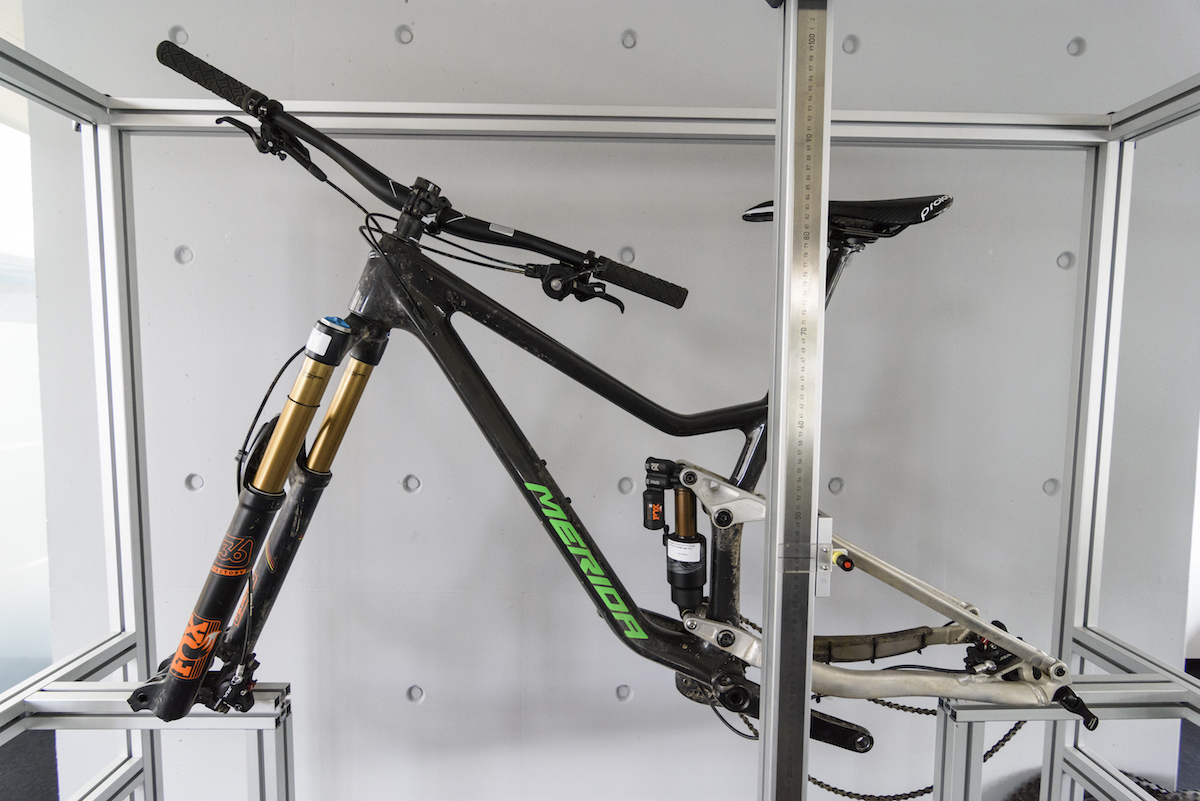
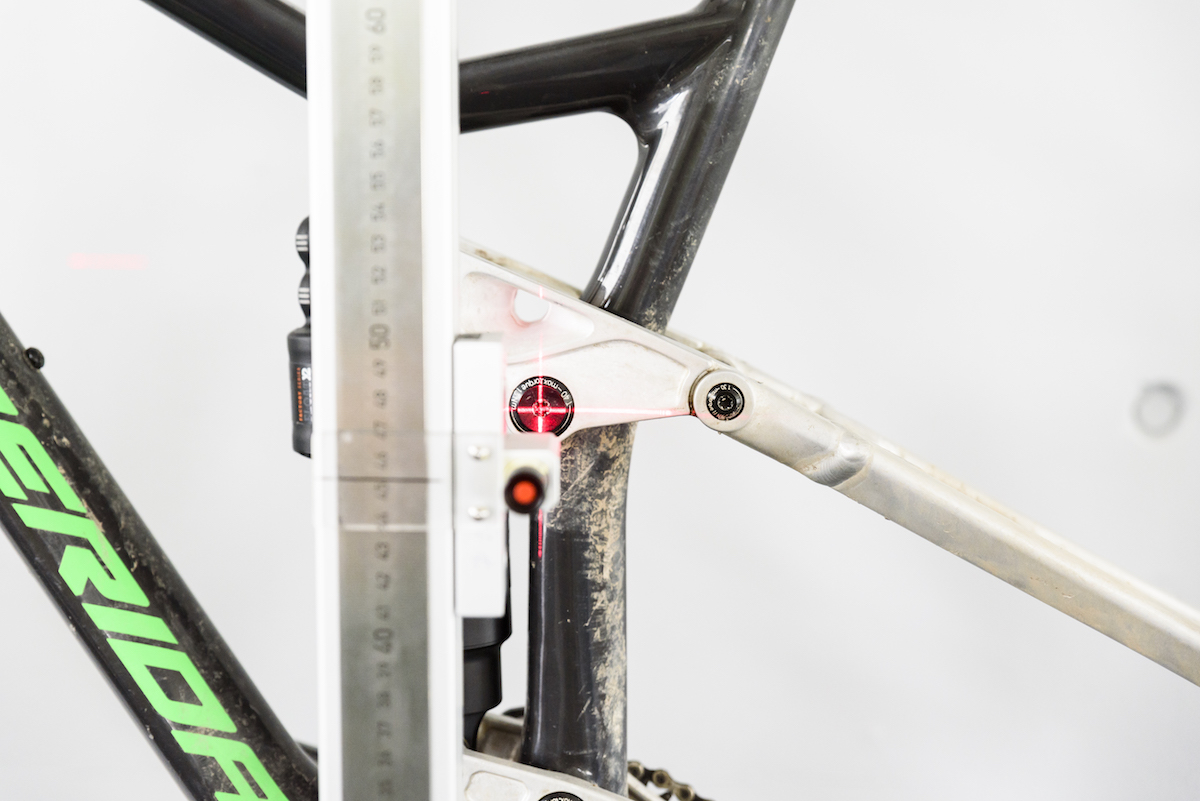
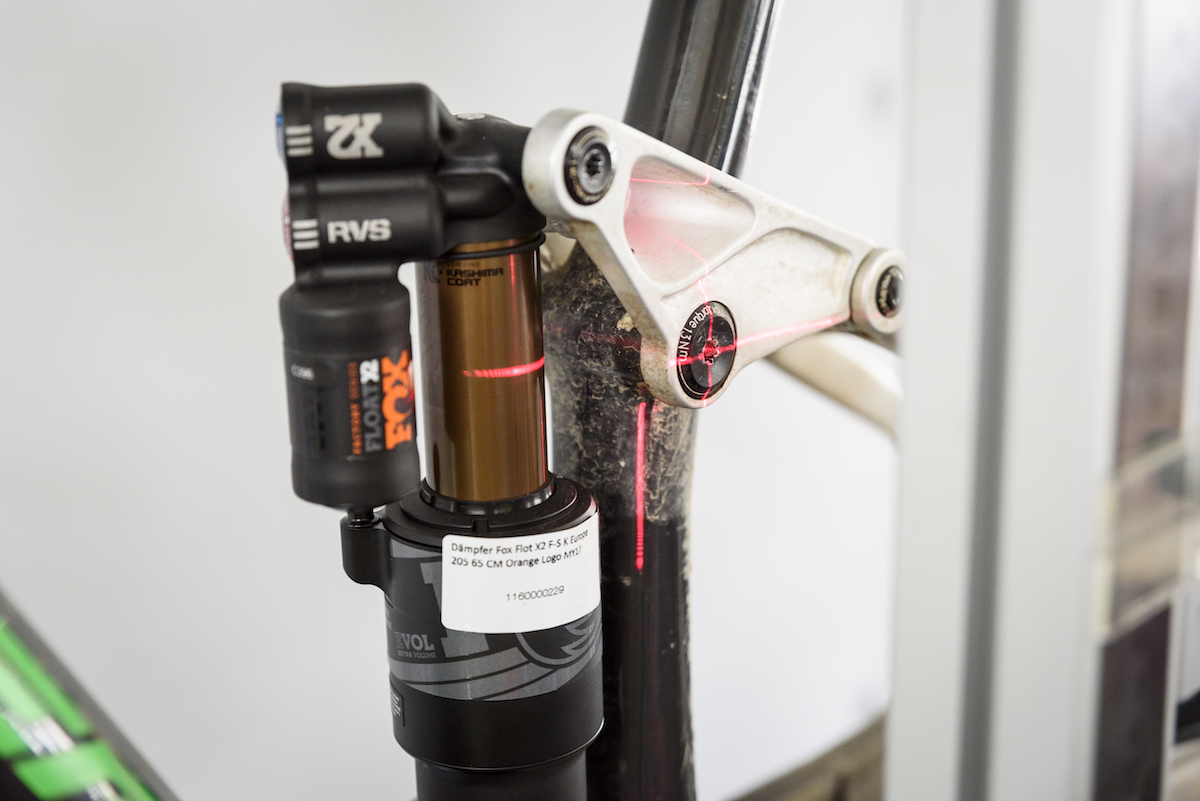
Rey explains that there are two further levels of testing that all of their production bikes must go through. First is at the factory in Asia, where each frame is torture-tested to explore the fatigue life and ultimate strength of every part of the bike to ensure it meets all necessary standards. The second level of testing is carried out by a third party based in Stuttgart, which verifies and certifies each frame. Fastidious would be an understatement.
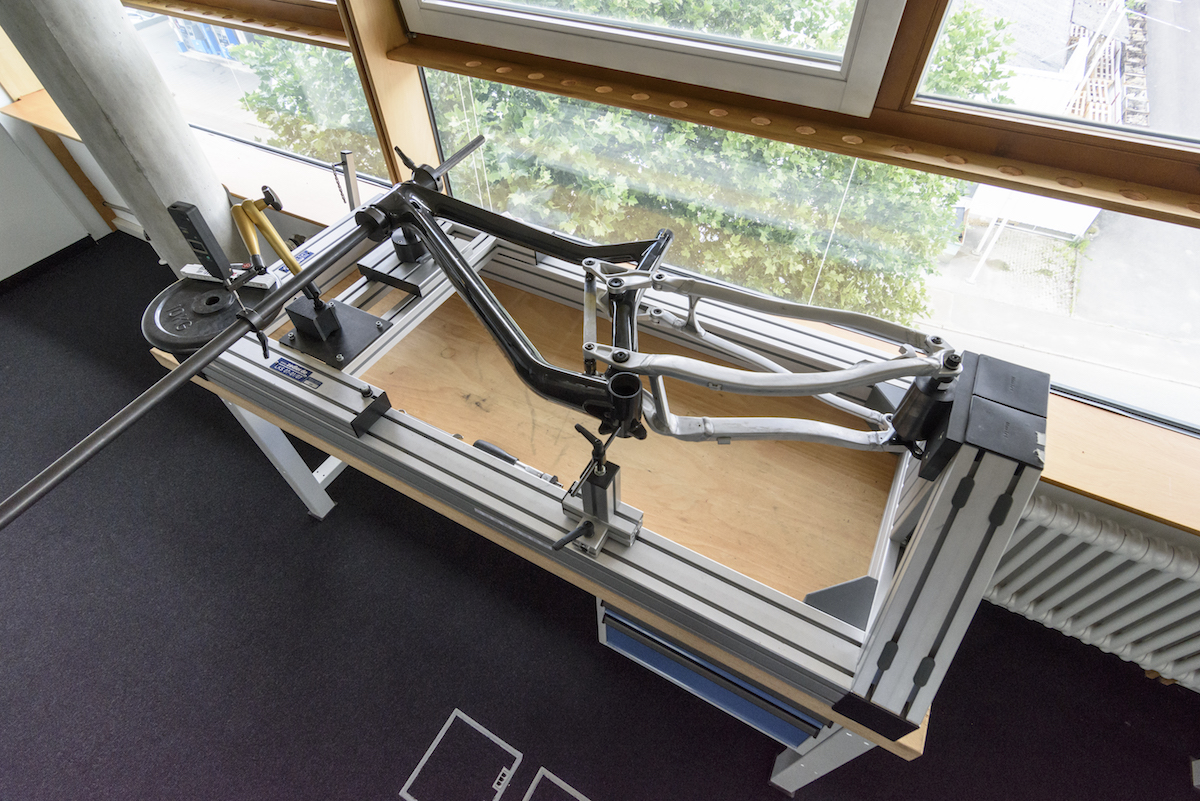
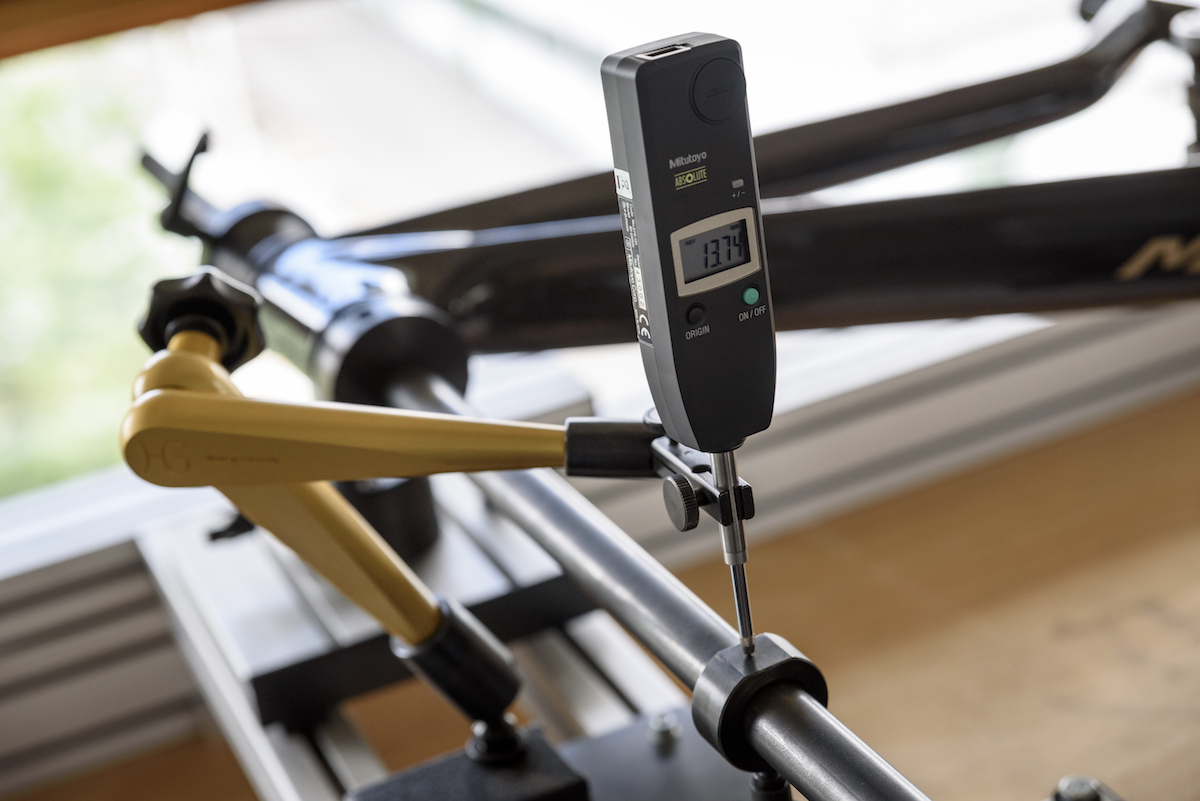
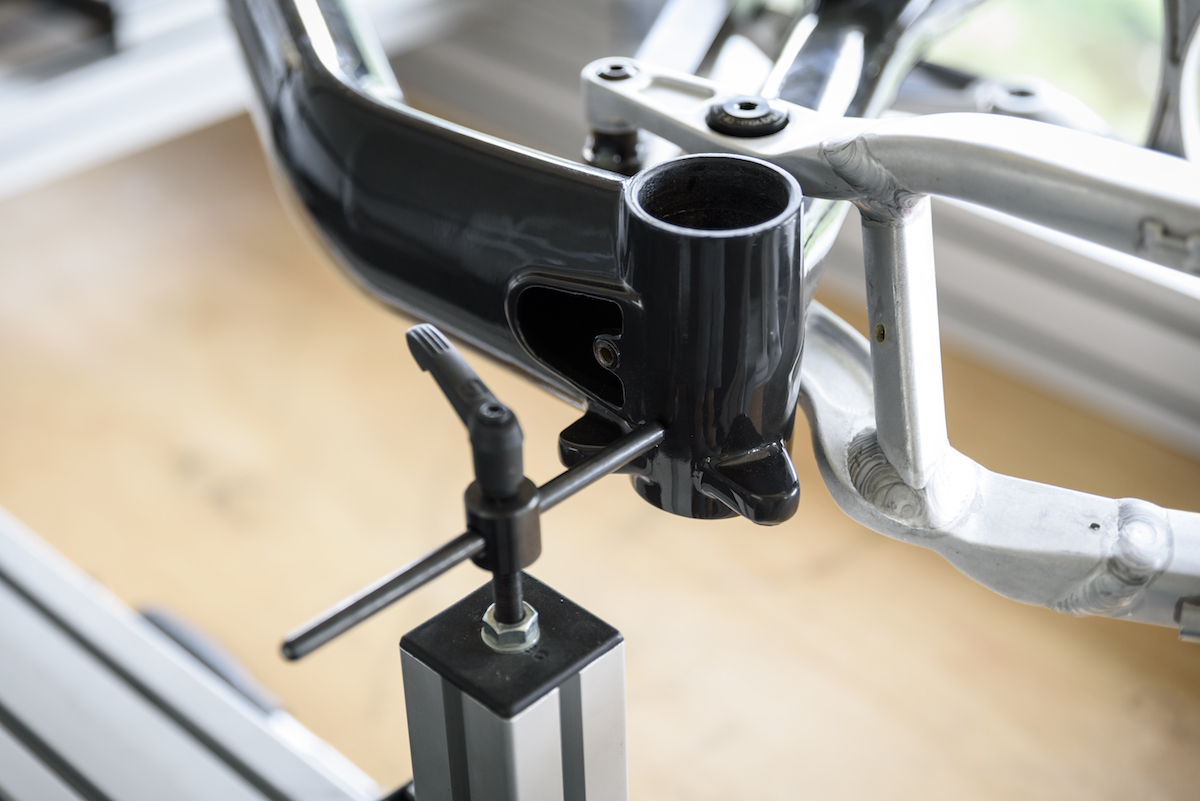
Birthing A Bike
Rey and Roman talk us through the timelines involved with producing the One-Sixty and One-Forty full suspension bikes, and how testing and feedback can affect those timelines. In the case of the One-Sixty, the project first began in January of 2015, and took about 18 intensive months to complete.
The project begins with a roundtable discussion at the R&D centre on what they want the bike to be and look like. Wheelsize, tyre width, rear suspension travel, fork travel, suspension kinematics, frame material, geometry and general frame design are all discussed in this preliminary meeting. It’s a methodical approach, with all the goals and parameters recorded in a single document which acts as a record of what everyone is working towards – with individual responsibilities assigned to design elements to keep communication lines as clear as possible.
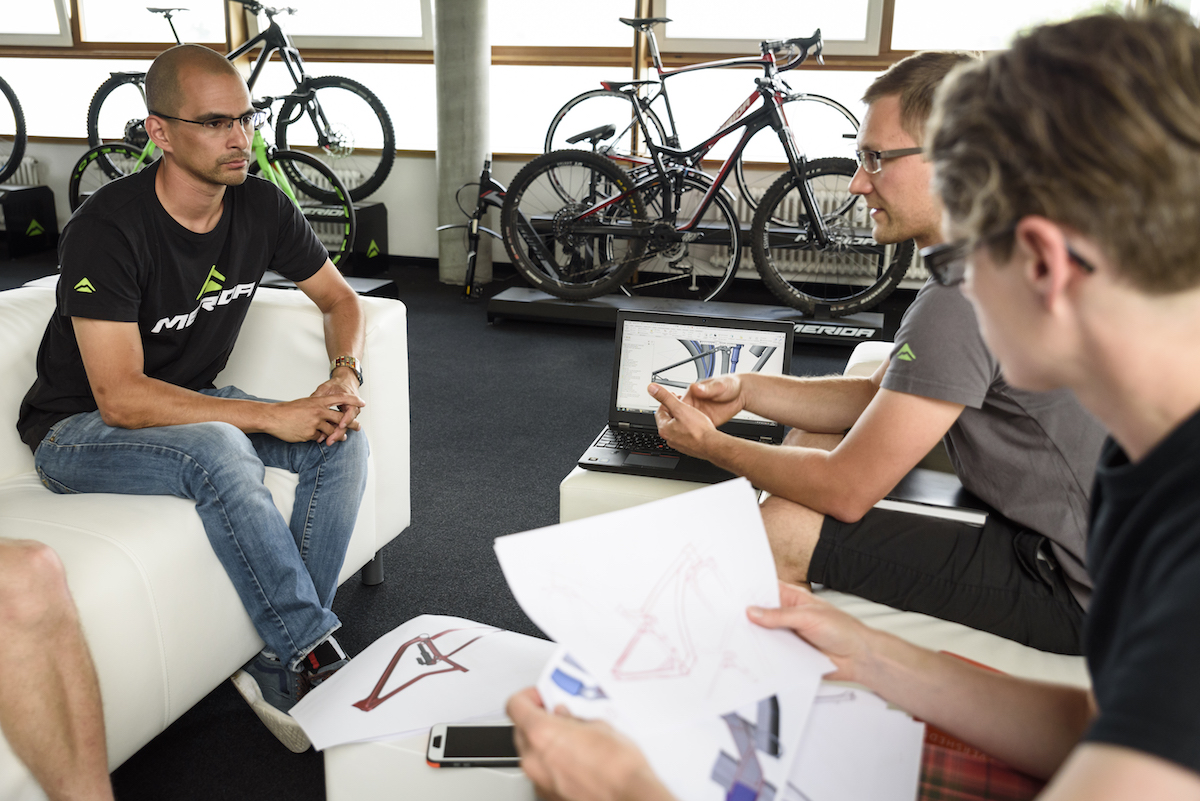
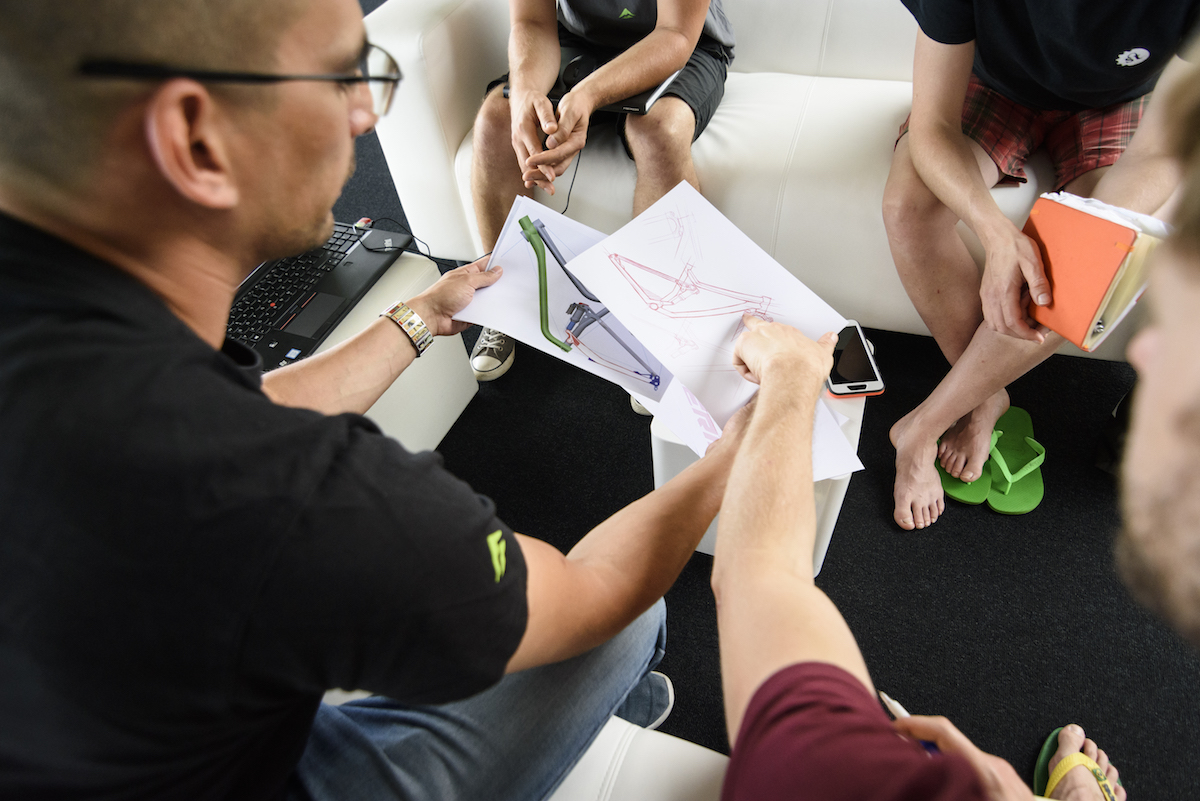
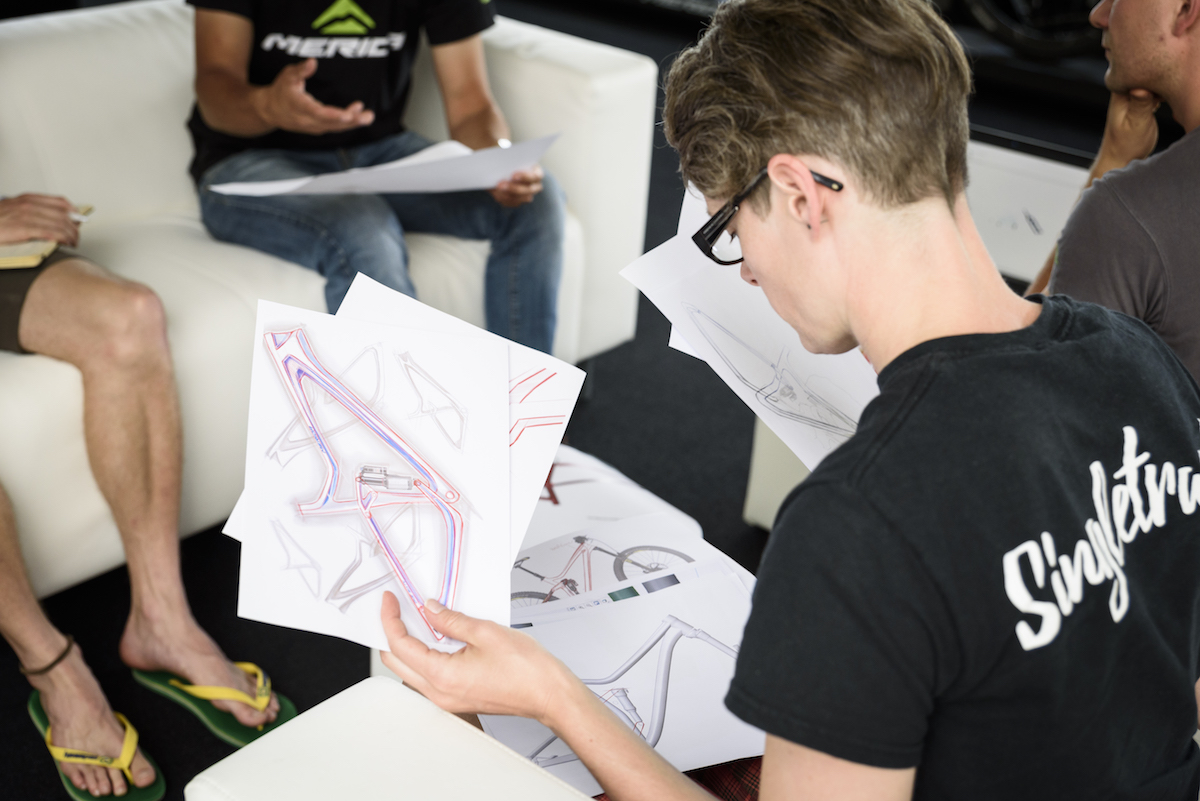
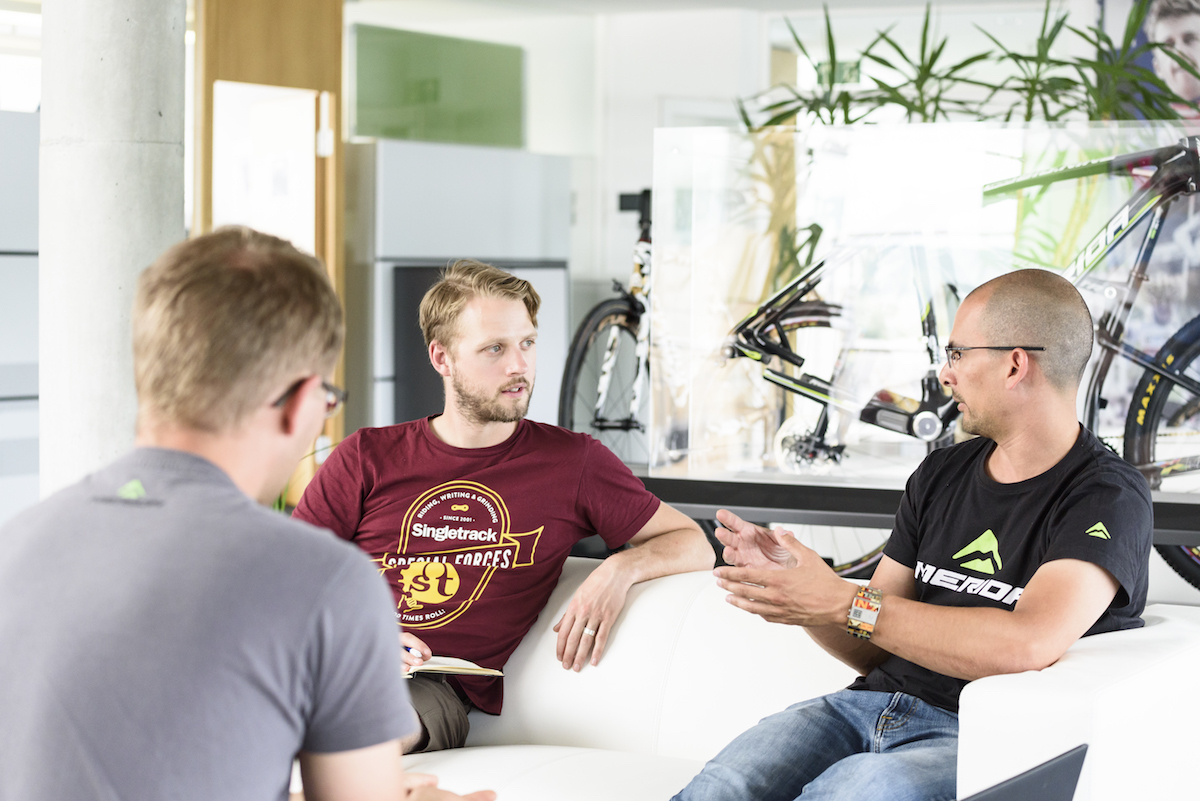
Once those parameters are agreed upon, Roman hooks up with Fox and RockShox to discuss things like leverage ratio and desired spring curves, in order to see what shock and tune will be best suited to the frame. This is also an opportunity to find out what those brands are working on over the next few seasons, which could affect frame design. This actually happened with the new Metric and Trunnion shock standards, which Merida decided at an early stage to incorporate into the One-Sixty’s frame design.
Further discussions then occur with component partners, including Shimano and SRAM. As an example, during the development of the One-Forty, Merida realised that the new GX Eagle groupset would be a key spec choice. Because of the enormous low-range of the 10-50t cassette, Merida changed the suspension kinematics on the frame to optimise the main pivot around a slightly larger 32t chainring, rather than the 30t chainring that it had originally considered.
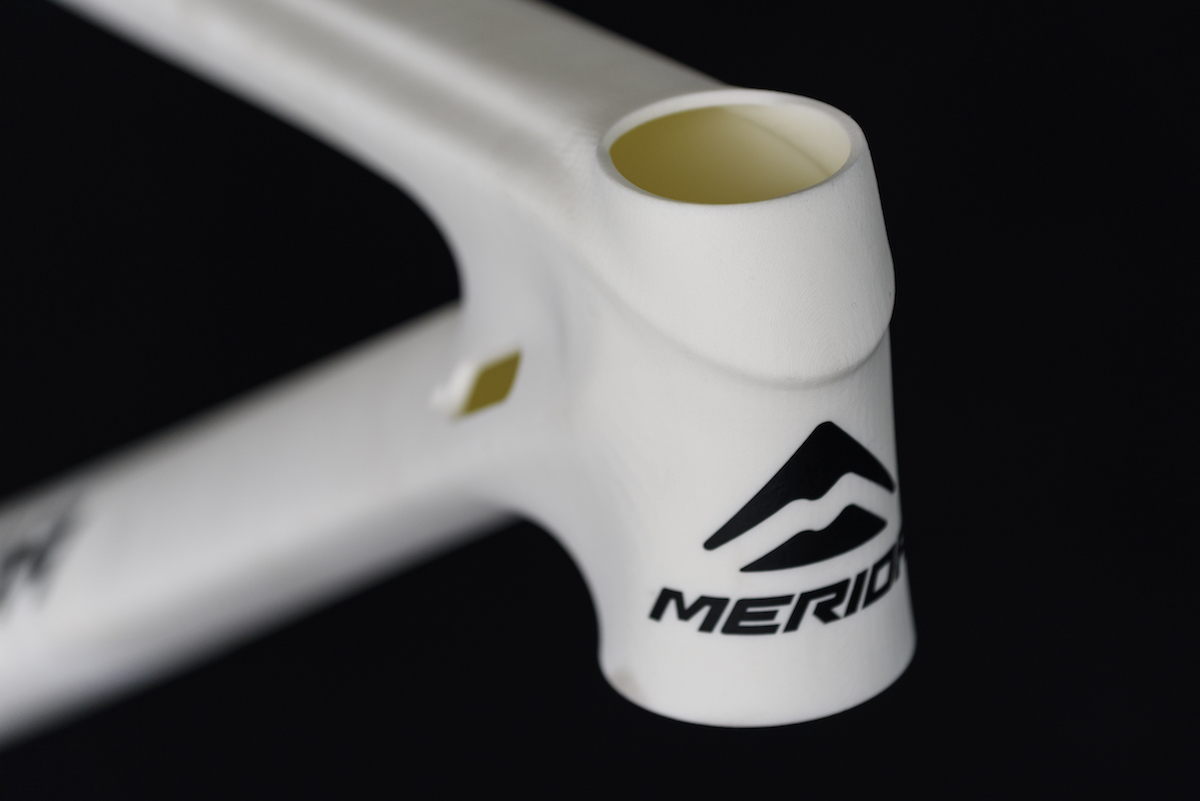
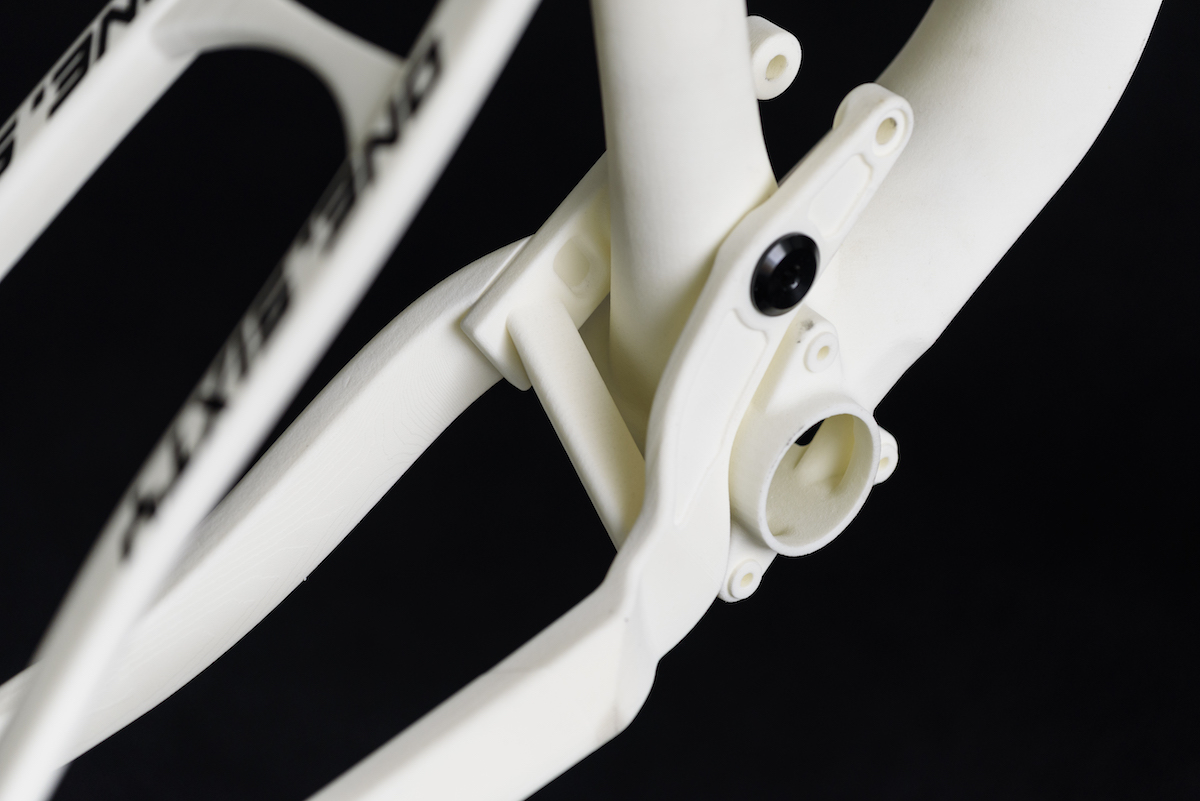
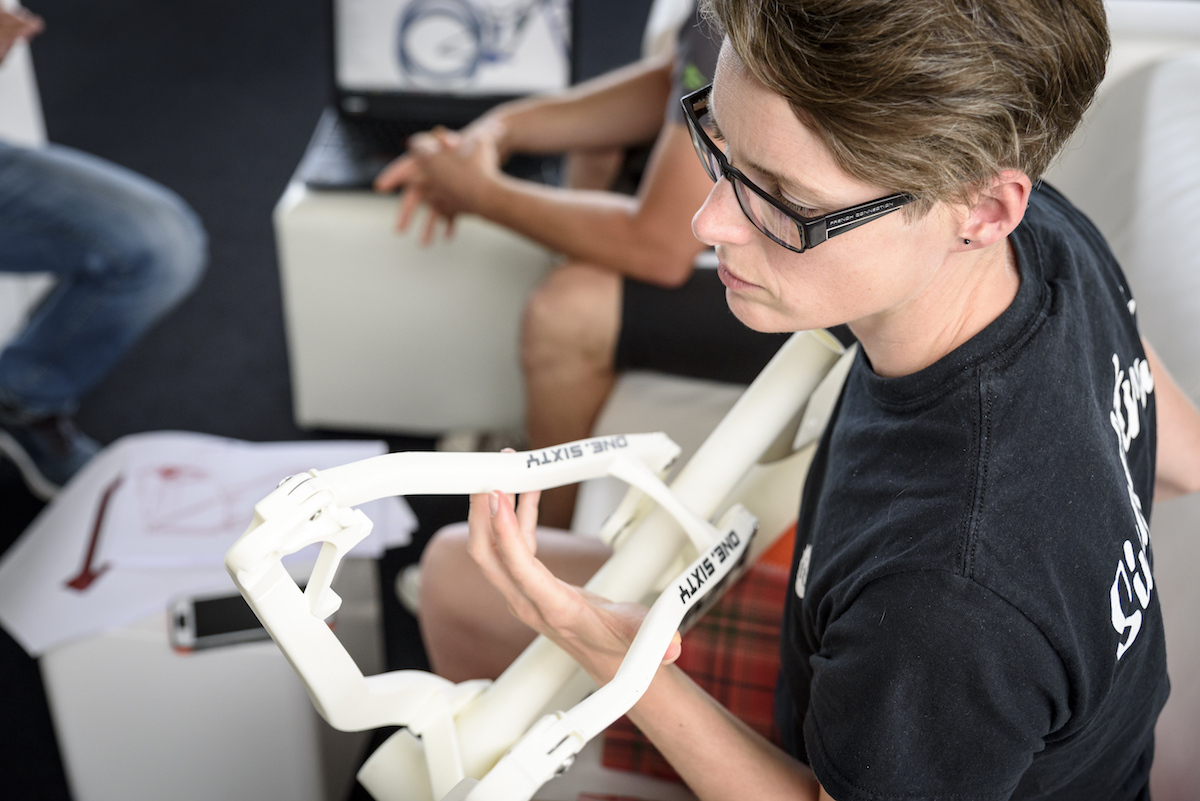
More to’ing and fro’ing ensues amongst the product team, as early design drawings are transposed into engineering drawings and CAD files that will then be sent to the factories in Taiwan. These files are used to produce 3D printed moulds of the frames, which take around three weeks to be produced and sent over to the R&D centre in Germany. Once the design team has the physical 3D model in hand, everything from suspension kinematics, to fork, tyre and derailleur clearance can be checked and played with. Providing the design team is happy with everything, the thumbs up is given to the factory to begin welding up first-ride prototypes, so that on-trail testing can begin.
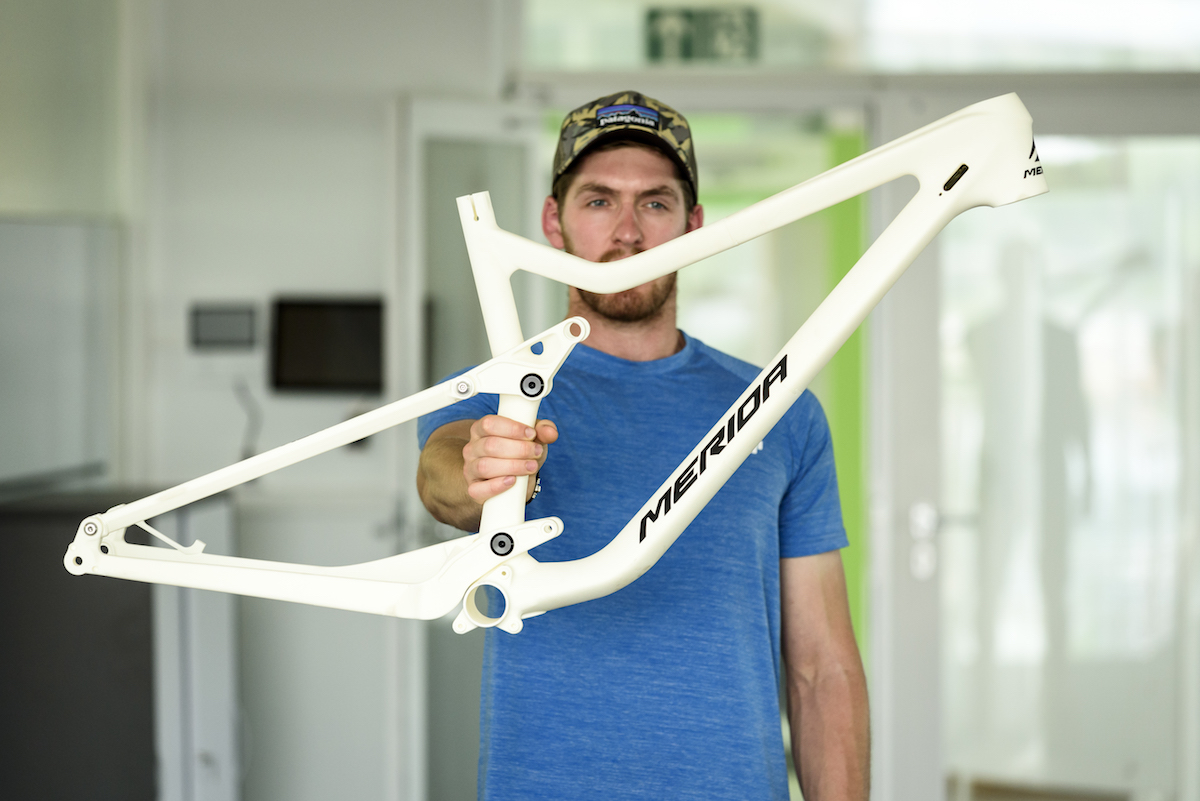
Fewer Cooks Don’t Spoil The Broth
Given Merida’s extensive experience of manufacturing for other brands, it has an envious amount of engineering knowledge to fall back on. That goes someway to explaining the relatively short 18 month development period between the very first meeting the R&D team had for the original One-Sixty, to mass production. For many other brands, development time can often be double that.
The other reason comes down to the size of the R&D team. You see, Merida has quite a unique position amongst the wider bike industry. It has an enormous manufacturing and engineering division, but compared to the likes of Trek and Specialized, Merida has far fewer staff involved in the design and testing phase. That means for Rey, he’s able to effect change with considerably less resistance than if he had to go through a big product team. And that means there are far fewer snags and delays in the overall design process.
It’s kind of like having an enormous ocean liner, but with a small crew in command of the ship’s controls.
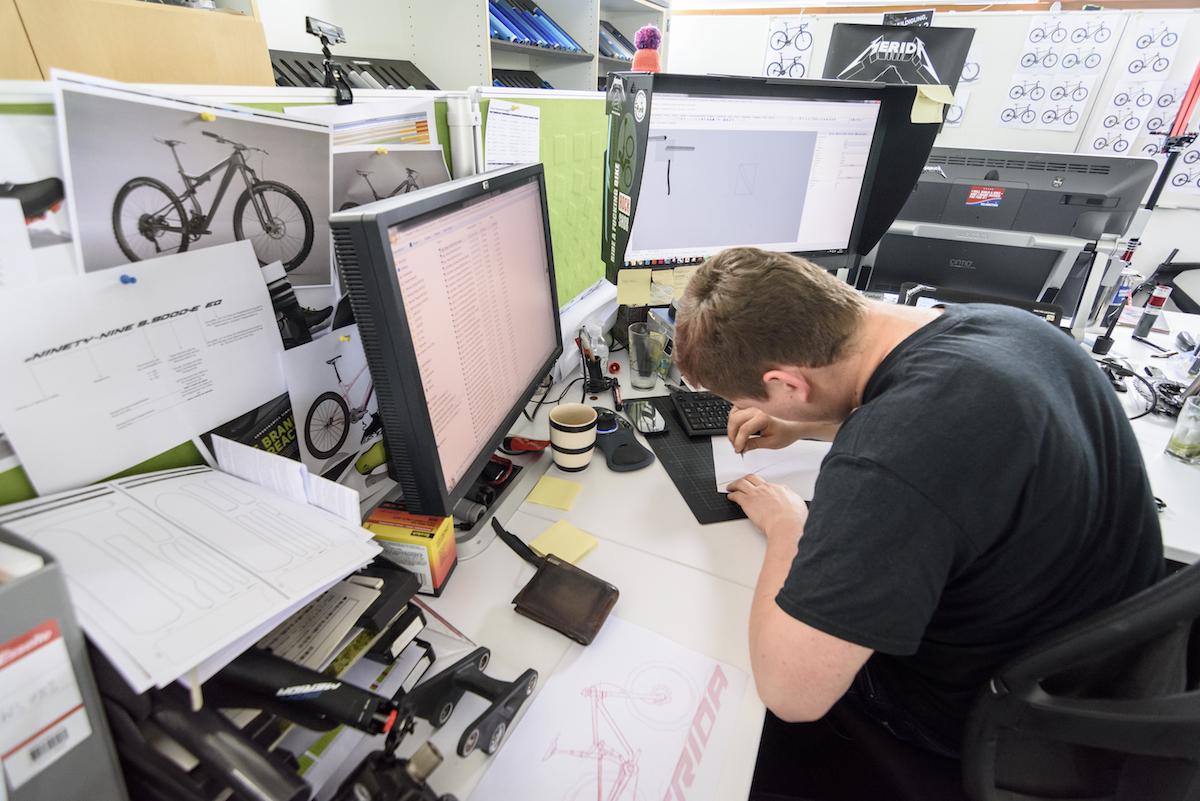
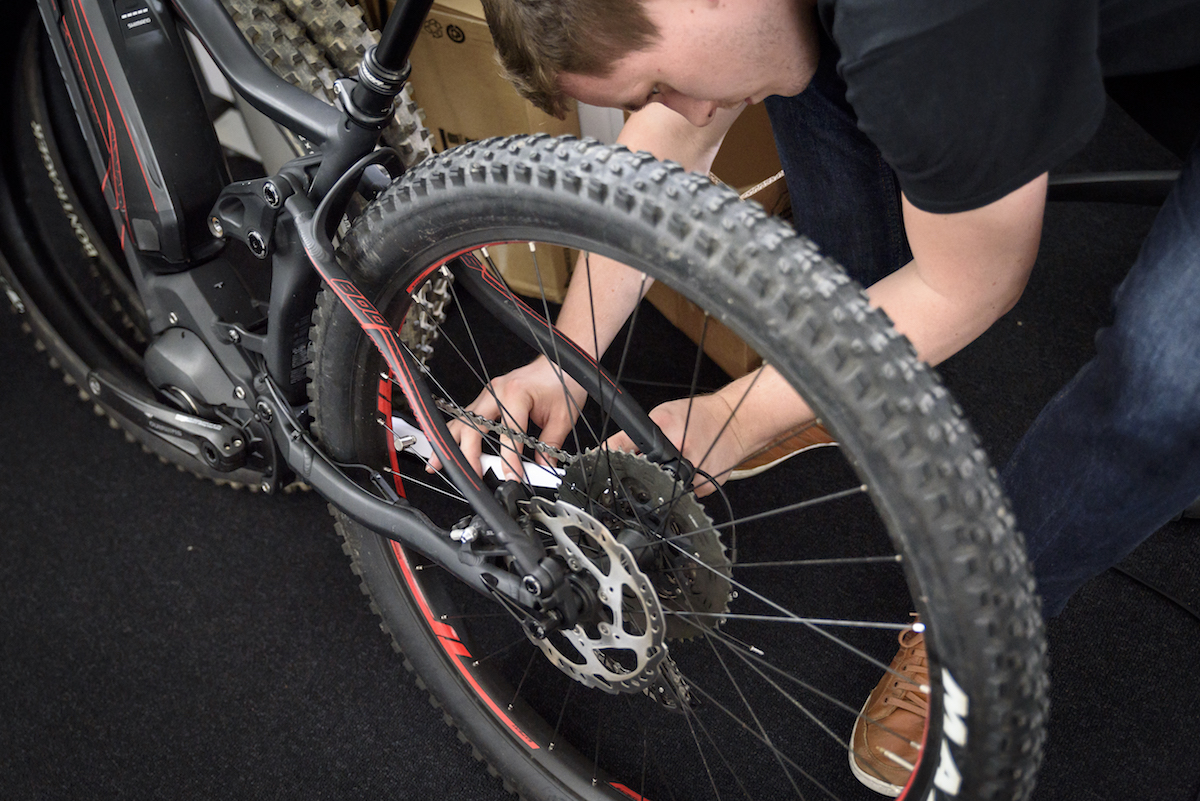
Rey says the biggest challenge is the communication between the German office, and Taiwan. Language and time zone barriers can make things tricky, but this is where that German organisational ethic comes in. There’s a strict project management approach throughout each bike’s development, with that original design sheet agreed in the early meetings being referred to, and changes carefully logged. Keeping a record of everything and writing everything down helps bridge these communication barriers between countries and cultures.

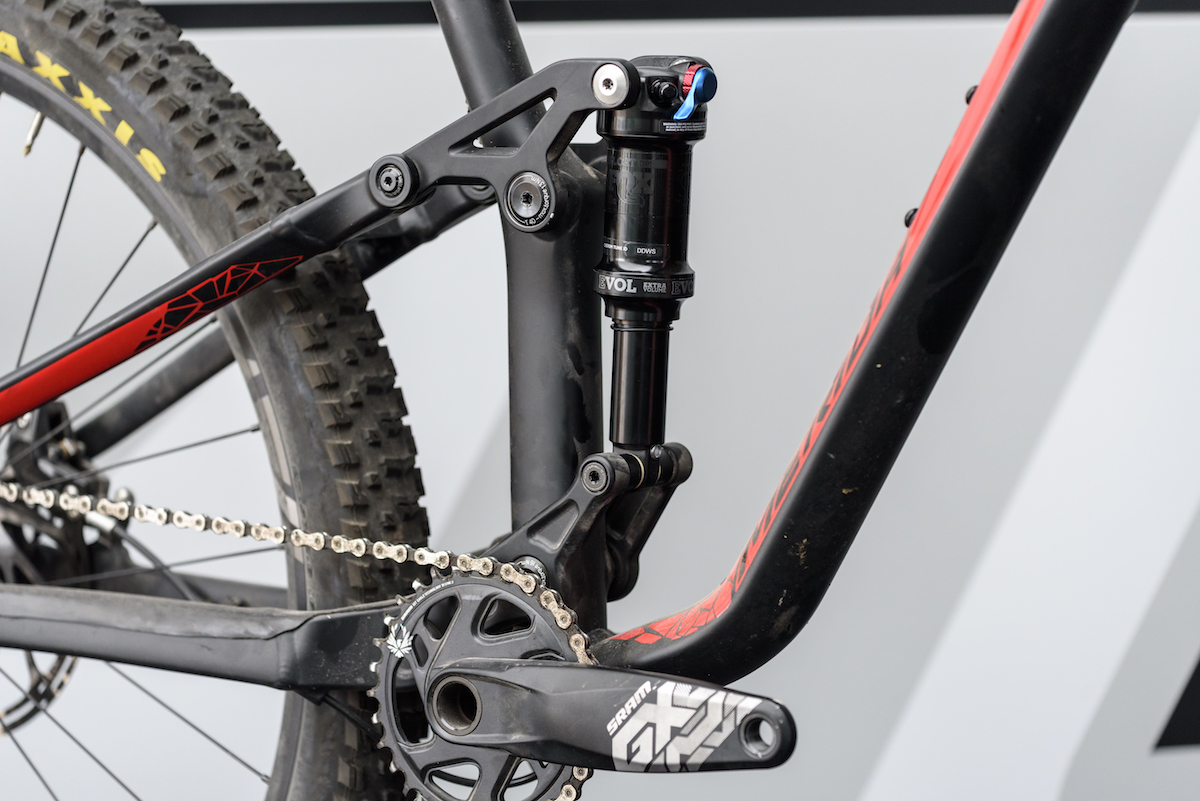
As an example of Rey’s influence and control over development, he explains to us why most of the newer full suspension bikes aren’t spec’d with remote lockouts – a feature that many other European brands are hell bent on providing for a buying public that loves such gadgets. However, Rey isn’t a big fan of remote lockouts. He thinks that they clutter a bike’s aesthetics, and with the exception of an XC race bike, most mountain bikers can do without the added complexity and cost of remote lockouts. And after all, if a full suspension bike is designed well to begin with, it really shouldn’t need a bandaid solution for poor pedalling characteristics in the first place.
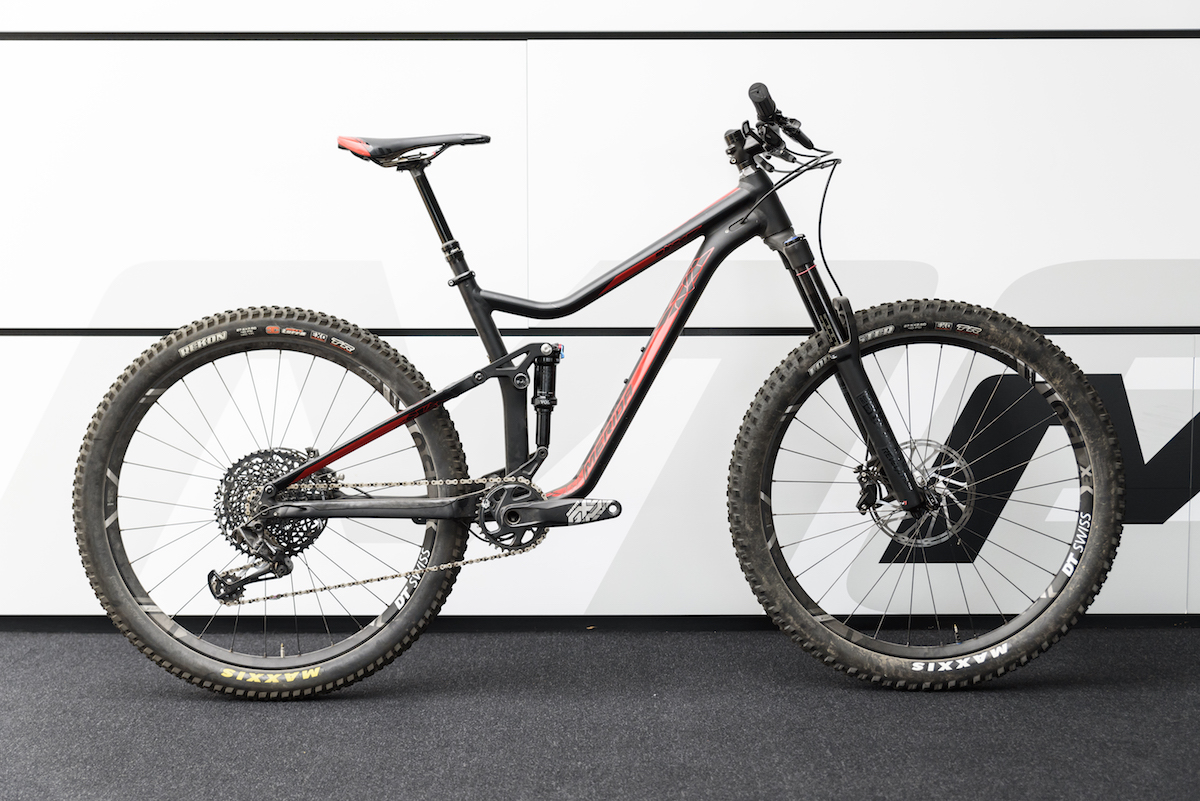
Rey’s influence is evident elsewhere in the range, such as the robust tyre choice for the new One-Forty. Each model comes standard with 2.6in wide Maxxis tyres, with a Minion DHR II on the front, and a Rekon on the back. Many other brands (and particularly European brands) would be eager to keep their 140mm trail bikes as light as possible, with tyres often being on the flimsier side to get overall weight down. That wasn’t going to fly with Rey though – this is a trail bike after all, and it should be fun and confidence-inspiring to ride.
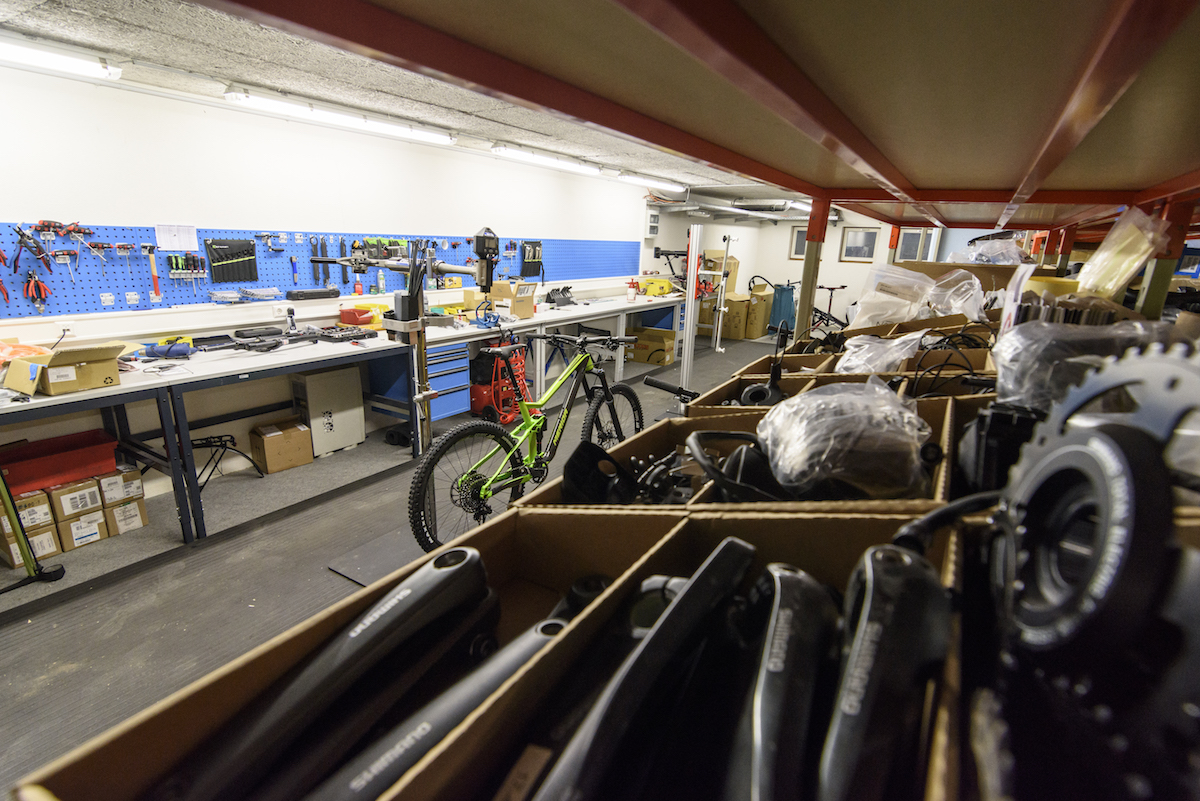

After talking about bike development, Rey takes us downstairs to the basement level, which houses the R&D team’s personal workshop, where prototype mules and pre-production bikes are racked up in between test rides. Made from raw unpainted alloy tubing, the prototype frames are somewhat rough. CNC parts are used in lieu of more expensive forged components, such as shock mounts, yokes, and rear wheel dropouts, while many of the tubes have come from the factory’s scrap pile. Rey explains that the frames have a relatively short lifespan, with bearings often dying quickly. However, as the sole purpose of these mules is to facilitate preliminary real world testing of geometry and suspension performance, durability is not a main concern.
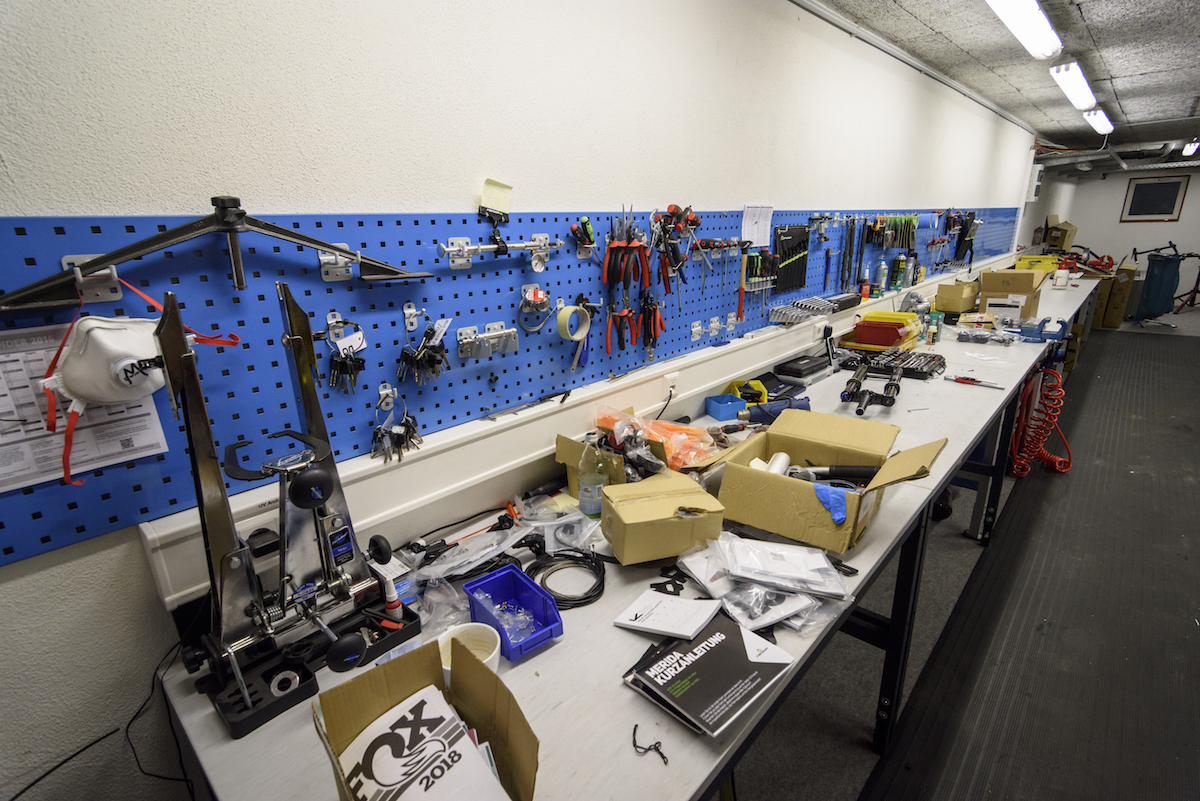
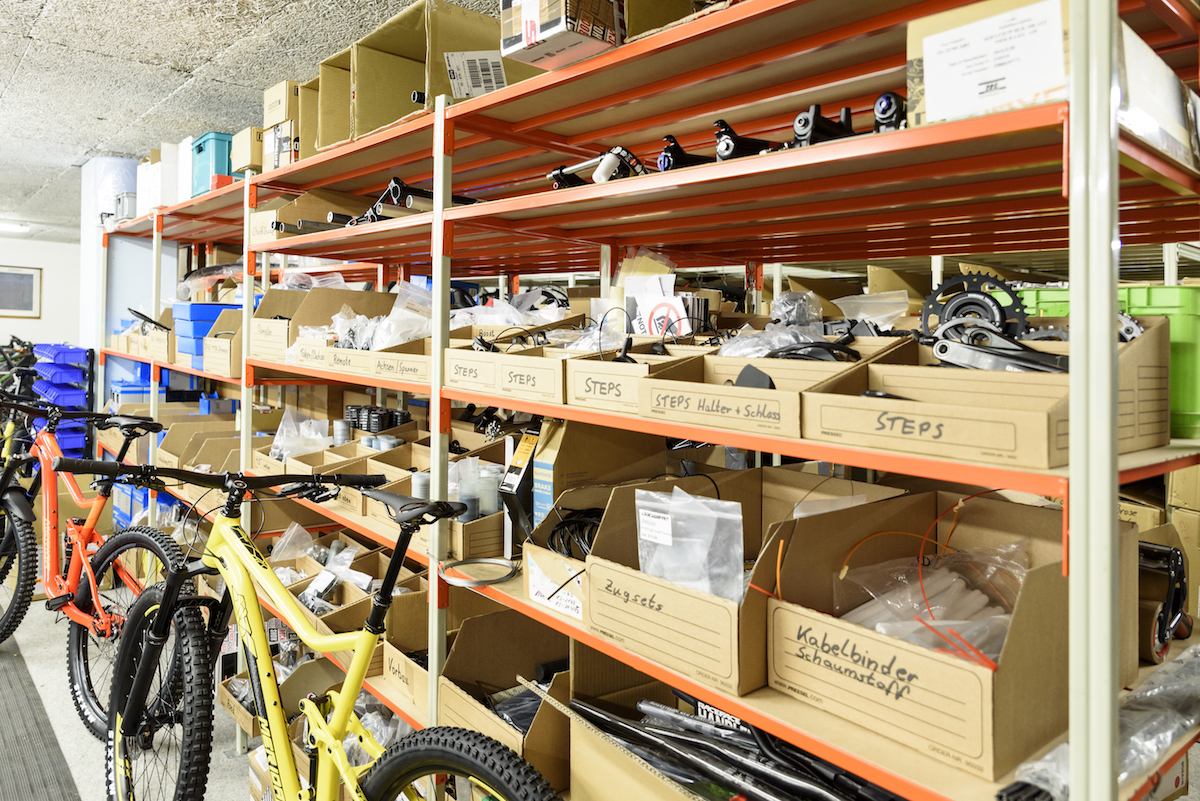
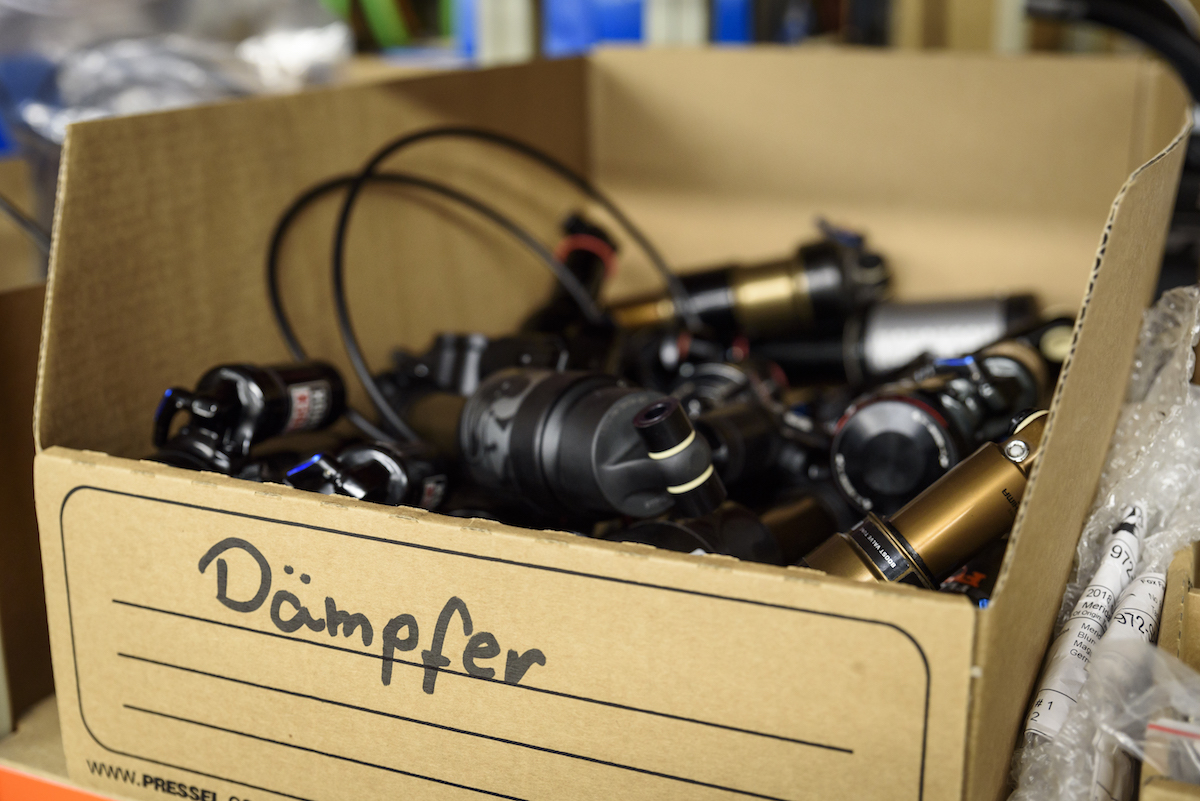
Behind several prototype bikes that we’re told not to take any photos of, there are stacks of shelving units that house spare parts and components, including drivetrain items, forks, shocks, tyres, handlebars, stems and electronic components for the Shimano STEPS motor system.
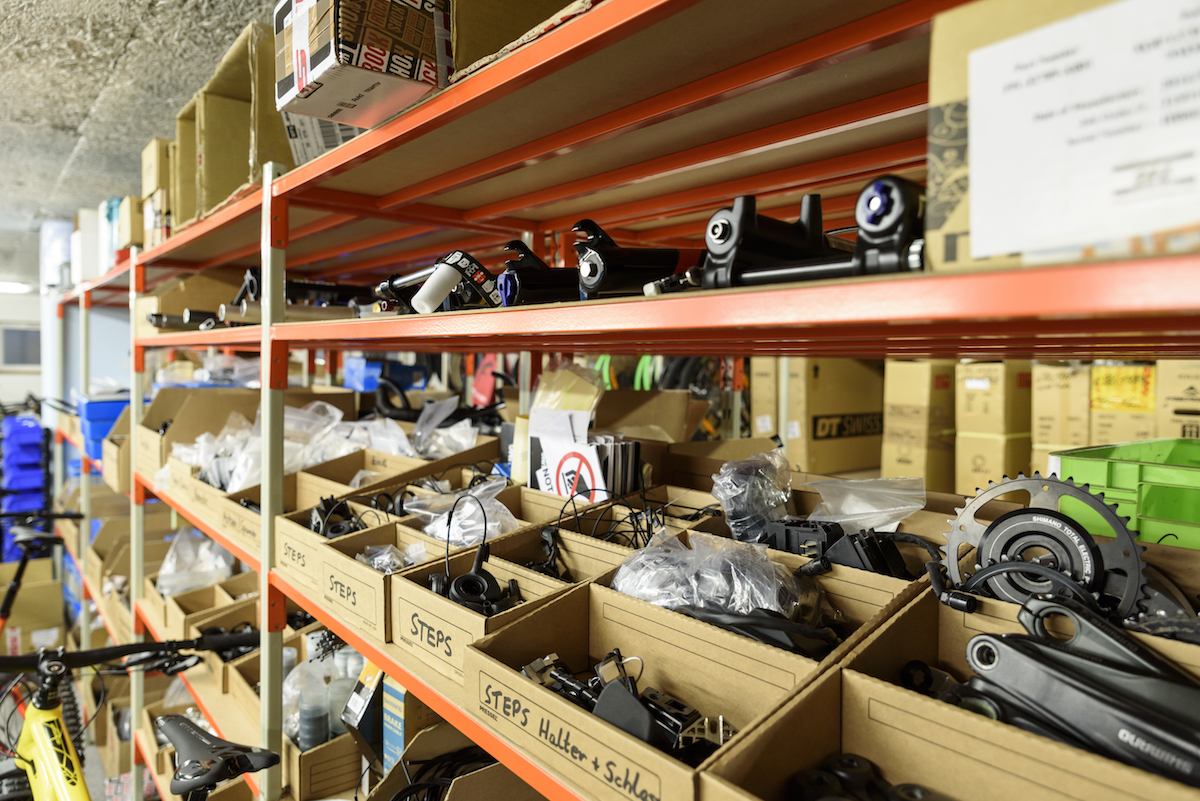
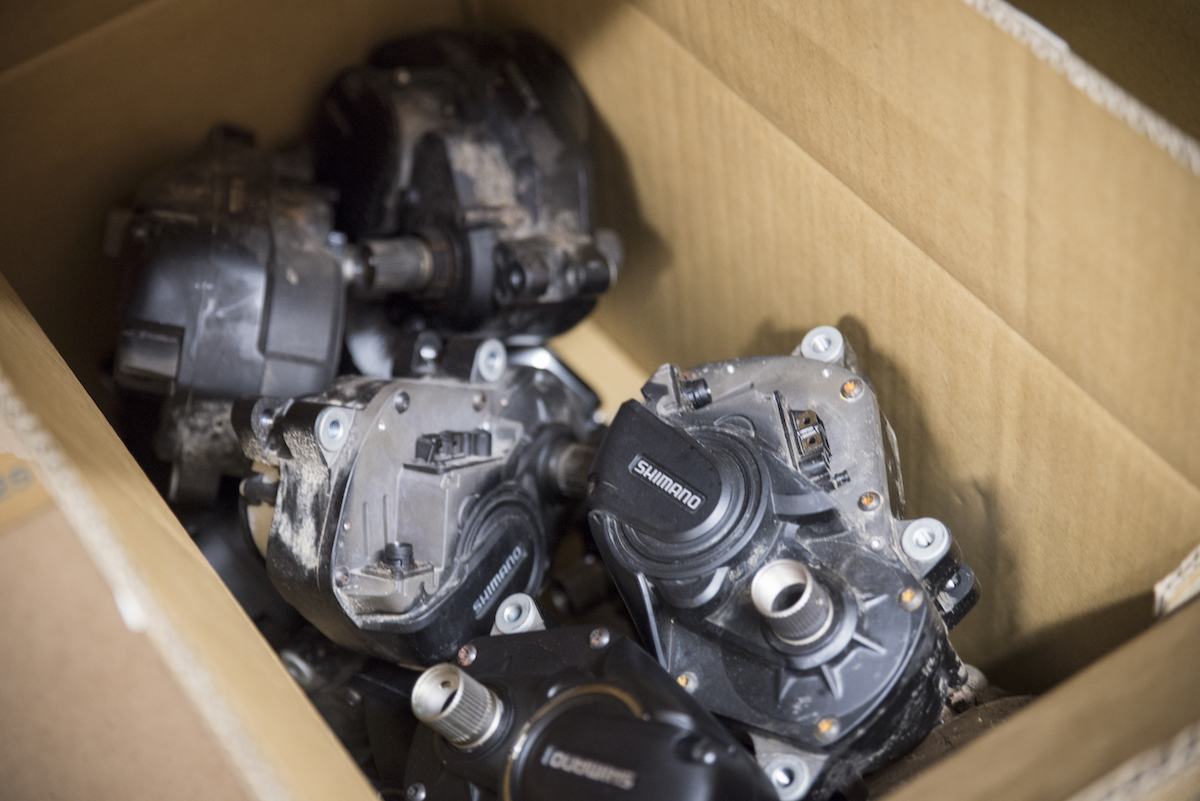
After spotting some used motors, we get chatting about Merida’s 160mm travel e-MTB, called the E160 – a bike that has blown away all company expectations by becoming one of the most popular off-road models for the previously conservative brand. In fact, while the One-Sixty is doing just fine on its own, Rey informs us that Merida is currently selling ten times the number of high-end E160 bikes as it is selling of the normally aspirated version. And the One-Sixty isn’t exactly an unpopular bike.
Rey explains that this likely has to do with with the relative youth of the e-bike market, where almost every brand is starting from a similar moment in time. For e-bike customers, brand history and cachet is less important, because most brands have such a short history producing them. For Merida, this works in its favour, with new customers approaching its range of bikes with an open mind.
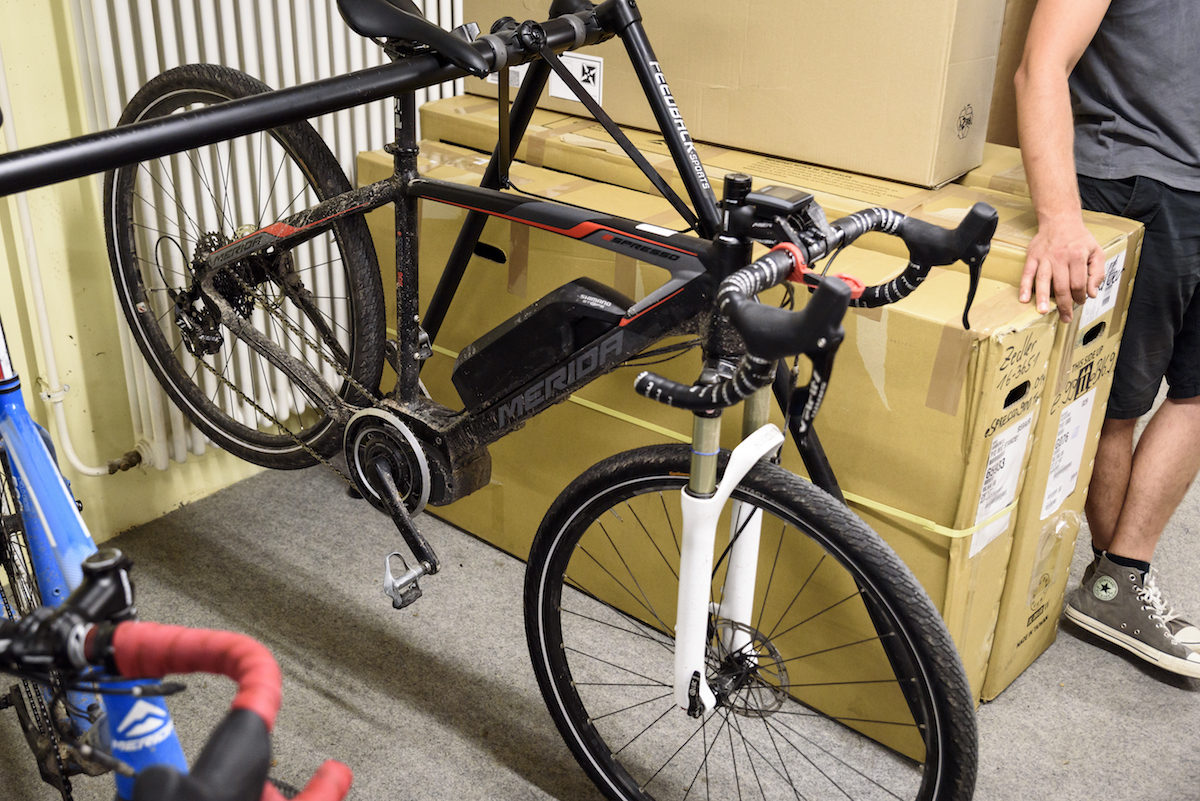
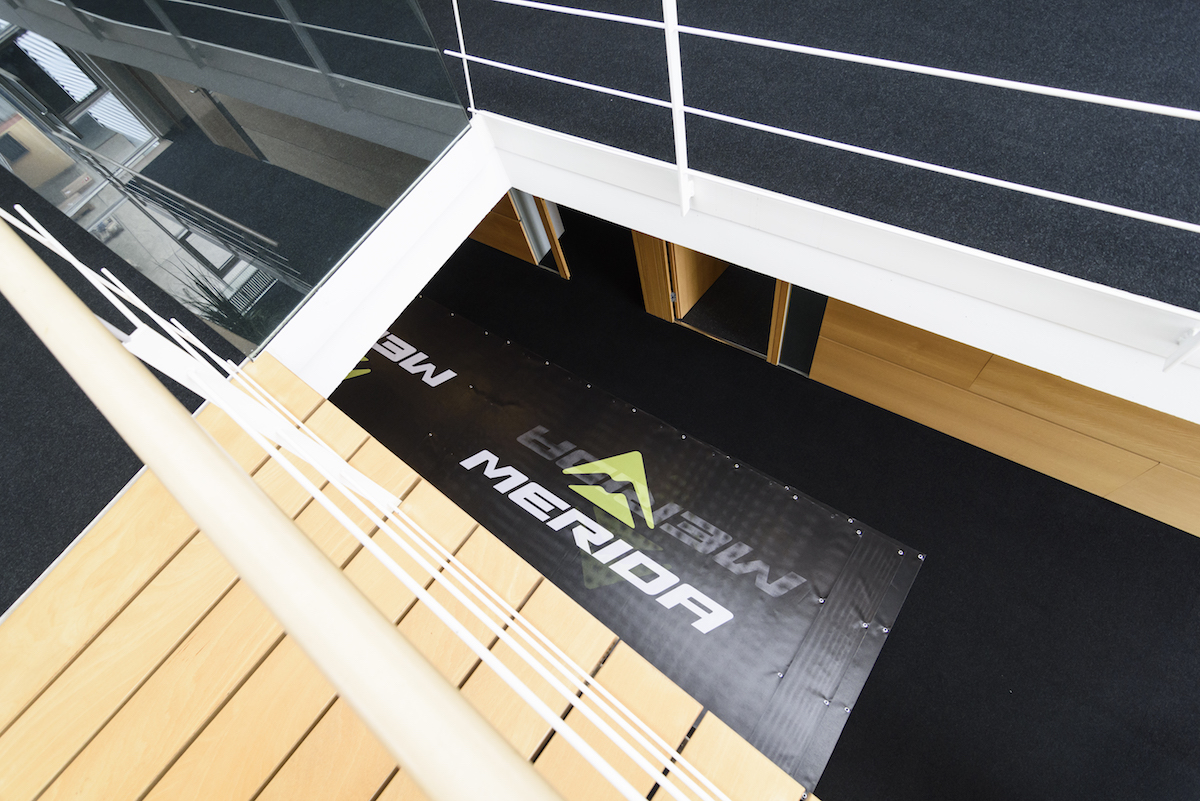
However, after what we’ve seen during our tour of the R&D centre, it would seem that the tide has already begun to turn on Merida’s non-e-MTB range of bikes too. Although many riders will still associate the brand with entry-level bikes and mass manufacture, others are starting to see the brand in a new light. And it’s this small Stuttgart-led design team that is leading the change.
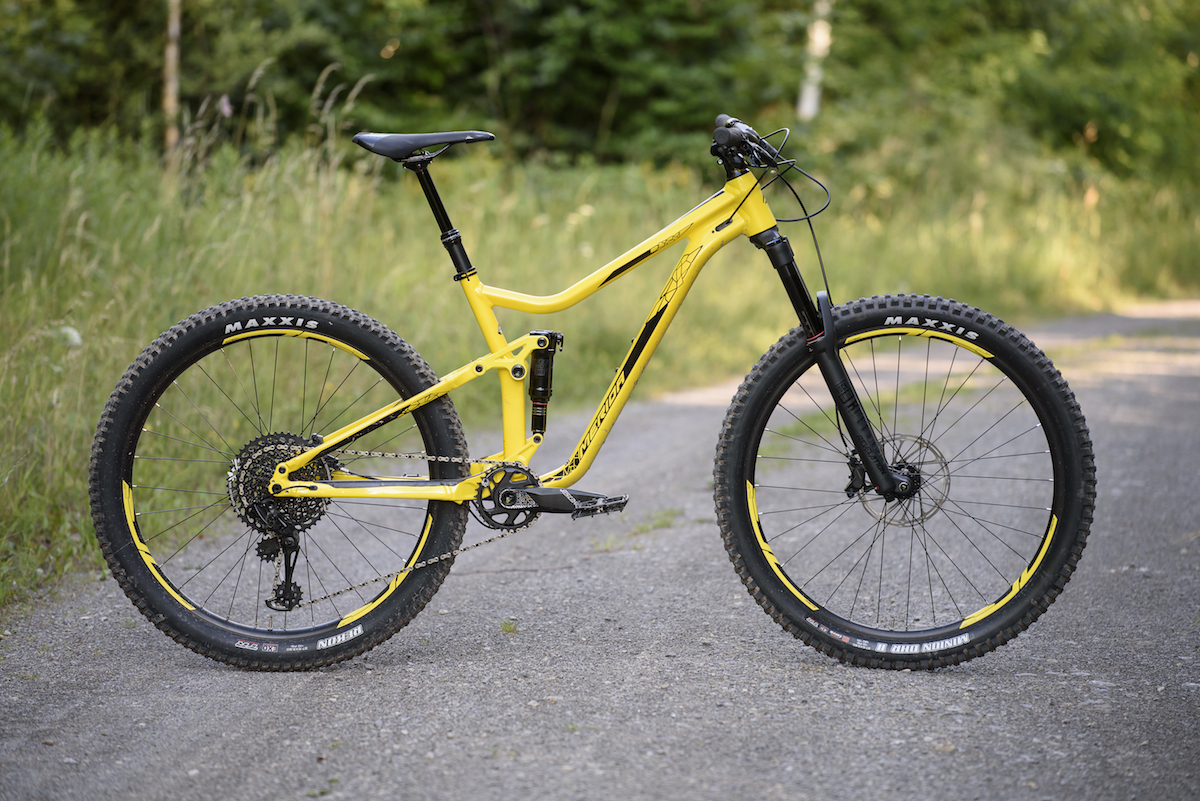
At the completion of our tour of the R&D centre, we jump in the van to follow Rey to a local riding spot to put the new One-Forty to the test. Slotting into the Merida lineup underneath the One-Sixty, the One-Forty features 140mm of travel and 27.5in wheels. It bears many similarities to the One-Sixty, with similar lines and the same Float Link suspension design. To read more about the 2018 One-Forty, make sure you check out our world exclusive First Ride Review here.
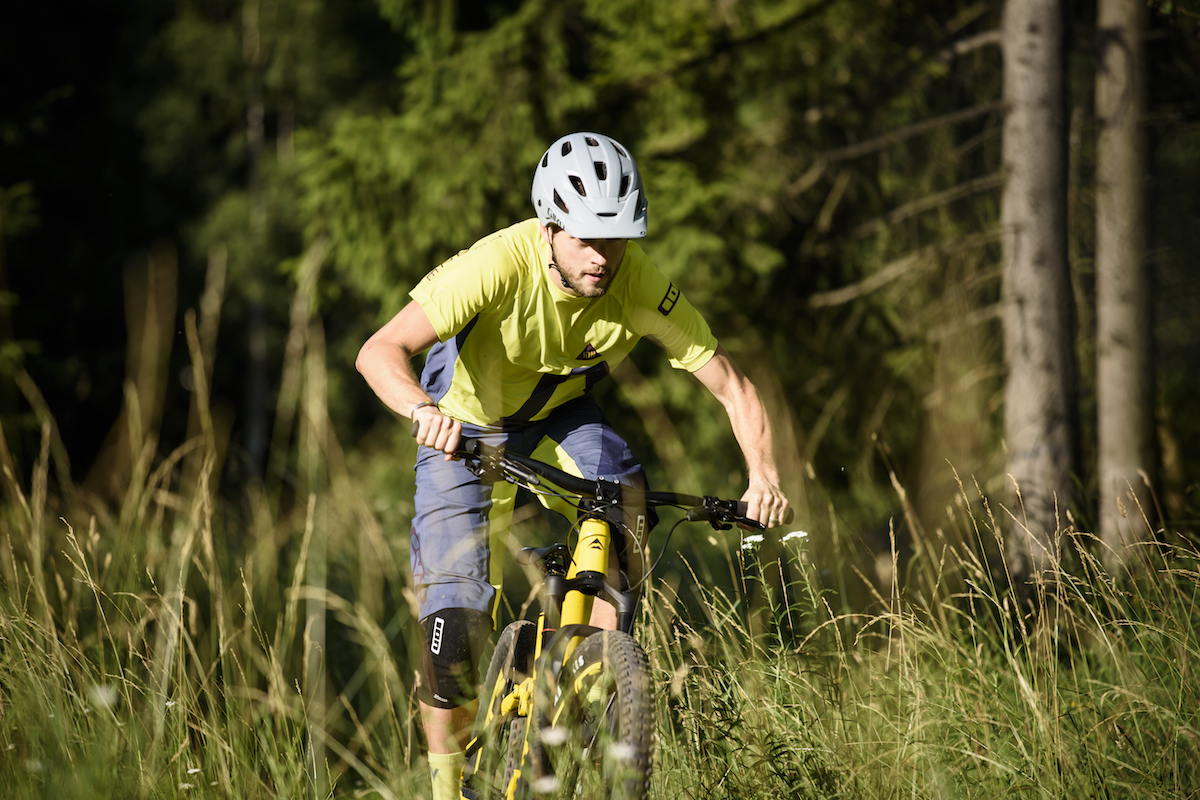
Disclosure
Merida covered accommodation and meals during our visit to Stuttgart.





fantastic feature! Thanks guys!
Great article thanks. Nice looking bikes.